

Specialized vs Trek Road Bikes: My Comparison Guide
So you’re interested in comparing the road bike ranges of Trek and Specialized, huh?
Well, you’ve come to the right… oh wait, you’re not?
No matter. I’m going to write about it anyway.
I’m interested and that’s all that matters (and you may find it useful, entertaining, a useful sleep aid). Onward!
This post contains affiliate links. If you click and buy something, I may get a commission.
Why Specialized and Trek For This Special Comparison, Mont?
Well, I’ve ridden a Trek carbon road bike for these past (nearly) six years and I’ve been very happy with it. I’d certainly consider buying another one.

We’ll get onto this, but one of the (less rational) reasons for buying my bike (the Domane) was that it was both an ‘endurance’ bike (built for the less fit who want a more comfortable ride) and cool* (it was the bike Fabian Cancellara would use to ride Paris-Roubaix).
(* I … M … H … O)
Things have moved on slightly (‘endurance’ and all out racing bikes have converged somewhat), but Specialized also had (still have) a cool ‘endurance’ bike (i.e. aimed at the less flexible gent) that evoked the spring classics: the Specialized Roubaix – the clue’s in the title.
So Specialized remains the bike manufacturer I almost went for (the one that got away).
Other Slightly Related Facts
I did end up buying a Specialized steed a year after the conclusion of my endurance bike purchasing quest.
Only it was a 20″ Specialized Hotrock hardtail mountain bike for my son. Whilst an excellent bike, less relevant for this post.
Finally, true fact, the colour scheme for this ‘ere blog, which I updated last year is based on my current favourite team jersey: the Trek-Segafredo women’s kit (circa 2019).

So Let’s Start With The Basics
Both Trek and Specialized are US manufacturers.
Trek was founded in 1976 in Waterloo, Wisconsin by Richard Burke, owner of an appliance distribution business, and Bevil Hogg, a bike shop owner. As a lifelong fan of Lord Wellington and Abba (both of who loved distributing appliances), this appeals to me.
The company started life in a barn , a building which I recall from an episode of the Cycling Tips podcast, Trek still keeps as part of its current ‘campus’.
(Come on, that’s history, innit.)
The company (as far as I can tell) continues to be owned by the family of the original founders, and is run by John Burke, son of Richard.
Specialized was founded in 1974, two years earlier than Trek, by Mike Sinyard. Initially Sinyard imported Italian bike parts that he’d discovered on his bike travels, but by 1981, Specialized had started making its own bikes, with one of the first being the Allez road bike*.
(* Wait! They still make the Allez, all these years later. Amazing…).
The company is 49%-owned by Merida, a Taiwanese firm that also make bikes. I think I probably knew this (prior to undertaking the ‘sort-of-research’ for this post) but was more surprised to discover that it made the acquisition in 2001. Anyway, Sinyard remains CEO.
Where Do Trek and Specialized Make Their Bikes?
Both companies undertake a large amount of their manufacturing overseas. It’s difficult (or impossible) to get precise figures as both are privately owned.
I can see why companies keep this information to themselves. When she was standing for political office a few years ago, the opponents of Mary Burke (of the Trek family) focused heavily on the fact that Trek bikes were made overseas and not supporting American jobs…
Trek sells in the millions of bikes per year (not all road bikes), of which maybe 10,000 of the really high end ones are manufactured in the US. Whilst much of the overseas production is (I think) in China, it also manufactures in Holland and Germany.
According to this article (which sounds legit but don’t believe everything you read on the internet, kids), all Specialized bikes are made in Asia, with key suppliers being Merida (makes sense), Giant and ‘Ideal’ (?!?)
Summary of the two ranges
I doubt you came here just for the history and some speculation over manufacturing facilities (though you should be aware that I do have actually have a history degree).
Wherez arez the bikez.
I thought I’d try to break down the road bike ranges of each company to help understand what compares with what. I could try to do that for their mountain bikes as well, but with my lack of knowledge on that front, I’d quickly be well over my skis. Look for that info elsewhere.
Similarly for their hybrid, e-bikes and other random ranges, well… whatever.
Trying to boil it down, here is a list of the road bike model ‘families’ made by each company, classified by the target sub-segment of the roadie market:
Trek’s Road Bike Range
- Aluminium (beginner/budget) road bike: aluminium versions of the Domane and Emonda
- Endurance (relaxed fit): Domane
- Lightweight (racey climby): Emonda
- Aero road (as opposed to pure aero): Madone
- Gravel (adventure): Checkpoint, Boone and Crockett (not a 1960s group of protest musicians)

Here’s a link to the full range of Trek’s road bikes , in case you can’t work out how to Google.
Specialized’s Road Bike Range
- Aluminium (beginner/budget) road bike: Allez
- Endurance (relaxed fit): Roubaix
- Lightweight (racey climby): Tarmac
- Aero road (as opposed to pure aero): Venge
- Gravel (adventure): Diverge

And here’s a cheeky link to the Specialized website , so you can see all the up-to-date variants.
How Do Trek And Specialized Denote Better Bikes (Model Naming Conventions)?
This is not always an exact science, as specifications can vary as models can be updated each year.
(Inexact science is my jam…)
Trek signal different levels of specification, higher quality (or lighter) frames, additional expensive features, through a combination of numbers (mainly) and letters (to a limited degree).
Higher numbers denote a higher specc’ed bike. The current Domane SL 5 has a Shimano 105 groupset. The SL 6 has Ultegra. Top of the range, the SLR 9 has full Shimano Dura-Ace Di2 electronic gears.
Trek bikes at the lower end of the price scale generally have the ‘SL’ designation (unless they’re aluminium frames, in which case they’re ‘AL’). I query if all the bikes in a range can be Super Light (or superleggara ) but there you go.
At the upper end an R is added, to arrive at SLR (I’m guessing Super Light Race). The key difference between SL and SLR bikes is the frame.
Using the Domane as an example, the SLR frame has adjustable resistance settings on the Isospeed ‘suspension’ at the front and rear of the bike. The SL frame doesn’t (you’ll get the level of resistance you’re given).

The Emonda SL frame is made from 500 series OCLV* carbon and weighs 1.68kg. The SLR version is upgraded to 700 series OCLV and weighs 1.19kg.
(* Optimum Compaction Low Void, in case you’re wondering…)
Specialized (thankfully) adopt a slightly more straightforward forward approach to naming their bikes.
Generally speaking, the basic version is just called the, er, name. So the basic Specialized Roubaix is called the… Roubaix.
Then as you go up the spec tree (this monkey loves climbing the spec tree), you have the following suffixes:
Finally, at the top end, presumably in a nod to Lockheed’s advanced aircraft development arm (Skunk Works), Specialized does an ‘S-Works’ version of each bike (although ‘S-Works’ goes at the start, i.e. ‘S-Works Roubaix’ rather than ‘Specialized Roubaix S-Works’…).
Want To See More Photos Of Beautiful Trek and Specialized Road Bikes?
Of course you do.
The websites of both Trek and Specialized do a fine job of showing off their bikes to the fullest.

I ride a Trek Domane as my main road bike. I *love* the look of the new Emonda (shown here). Gold though...?

I am rather partial to the S-Works Tarmac (pictured here), if Specialized want to send me one to review....
Well there is no conclusion, is there?
Because I haven’t finished.
The first draft of this post (which wasn’t even finished) was knocking on 5,000 words. Too much for even the most patient blogfans to bear.
I’ve broken it down into what looks like four future posts, each one dealing with a different bike category. So I’ll compare the Trek Emonda with the Specialized Tarmac, the Madone with the Venge. You get the idea.
Update: I’m pleased to report that I’ve published the Trek/Specialized endurance bike comparison – so now you can read it:
- Trek Domane vs Specialized Roubaix: Endurance Road Bike Comparison
Now, quick show of hands.
Who here owns a Trek road bike or a Specialized? Which one? What are your thoughts and would recommend the one you’ve got?
Let me know in the comments section below.
Cheers Monty

Subscribe to Sportive Cyclist
I write entertaining articles about road cycling: gear reviews, training advice. All from a MAMIL perspective. Subscribe below and I will send you enjoyable and helpful cyclo-info straight to your inbox.
33 thoughts on “Specialized vs Trek Road Bikes: My Comparison Guide”
I have 2013 S Roubaix and love it. Not sure I would purchase the latest model, everything seems to be getting to ‘technical’ and awkward to fix out on the road. I like to keep things simple stupid.
2016 Roubaix with 105 was my first drop bar bike, loved it but over time it became clear I needed a size 58 rather than the 61. Replaced it with a 2018 Roubaix and got it pro fitted, it’s amazing now. Followed up with a 2018 Diverge E5 to have an aluminum bike without the future shock but with the same fitting for dog trailer pulling, winter, and trainer use (SUPER similar geometry to the Roubaix)
I’ve been really happy with them, and never felt like it was holding me back compared to a Tarmac. They can be set up similar regardless, and the accumulated fatigue of chip seal around here makes the Roubaix a no brainer.
How tall are you? I’ve been waffling about a 58
Hi Jonathan – I’m between 5’9 and 5’10. Hope that helps!
I have a 2019 Roubaix Expert.
IT’S FABULOUS!!!!!
2018 Specialized Allez Sport. My first bike since I was a kid, so I don’t have much to compare it to, but it seems fast enough (I have a couple KOMs locally) and is comfortable at a century so nothing to complain about. It could be a little lighter, I’ve been thinking of upgrading and keeping the Allez for commuting but it will be hard to convince the wife it is a worthwhile expense.
Trek Domane. Great bike.
I have a Trek Checkpoint 5.0 and a Specialized Diverge Sport. I like both bikes. As a general comment, the Trek is heavier than the Specialized. So when you are buying at the bottom price of each carbon model, Trek seems to go for durability and flexibility of use over lightweight. By the way, my Checkpoint was made by Giant in Taiwan (on the bike box).
I finished 4 RAAM times on a Specialized S-Works Roubaix – loved it ; very comfortable to ride for hours, but slow and hard to ride fast. Just did RAW on my Trek Emonda – the best! Super light and fast. Actually, I love both of these bikes – there are just very different.
Had a 2013 Roubaix for a couple of years, loved it, did some 100 milers and the Grand Depart 2019 for Prostate Cancer UK 130 miles including cobbles. Last ride on Doris (the Roubaix) was Revolve 24 at Brands Hatch, again she performed well. I now have a 2016 Tarmac SL3 Expert, early days but loving the sportier geometry and the ability to put the power down.
I have a 2014 Trek Domane 4.5 which I purchased after a bike fit with my Boardman Team Carbon demonstrated that I needed a smaller bike. If this sounds familiar I went for the bike fit after reading your blog as I prepared for Ride London – just as you did a year before! I love this bike and have rode Ride London in 2014, Velothon Wales in 2015, Ride London 46 in 2016 and Velo Birmingham in 2017 numerous 100Km plus rides. I must have ridden well over 4000 miles. BUT – this year I was due to ride it on Ride London again. Following a gear cable break on a training ride I discovered play in the cranks and this was traced to a siezed BB bearing which was spinning in the frame and had worn the BB housing. This required a return of the frame to Trek for a repair which they would not do under the lifetime warranty- apparently this is wear and tear. The repair wasn’t cheap but wasn’t as bad as I first feared but couldn’t be done in time for this years Ride London. So I’d be interested to know what maintenance regime other Trek users have used to avoid this happening to them. With the Trek unavailable for RL this year used a smaller 2014 Boardman Team Carbon which I bought at the end of 2014 for £750 when it was end of line at Halfords, an absolute bargain and a third of the price of the Trek. Upgraded from 10-speed 105 to 11 speed Ultegra, and getting it set up properly for me it is just as good as the Trek and climbs better although is perhaps a little harsher on rough roads. I use Specialised Toupe saddles on all my bikes though!
I have a 2017 Trek Domane SL7 (Ultegra Di2) for my normal road bike. I’ve updated it in a few places, Deda Zero 100 bars and Stem, Hunt wheels with Swalbe Pro one tubeless tires, Absolute Black Oval chainrings,Selle Italia Superflow SLR saddle. Weight saved was 0.8KG. Overall love my Domane, a much better ride on the welsh pothole riddled roads than previous bikes. Will use it on next years Ride London (assuming I get a place) rather than my Look Huez (great as a lightweight climbing bike for the welsh hills).
I had a 2015 Specialized Roubaix expert. It was good. Made the mistake of test riding a 2018 Roubaix Comp with Future Shock. First ride not much difference. We changed the shock spring from the stiffest to lightest. Night and day better. This bike floats over bumps compared to my previous Roubaix. It’s quick and fast. The 28 tires are excellent too.
Thanks for the great post.
After laboring (or “labouring” if you are in Europe) – or really obsessing – about my “retirement” bike, I finally chose the 2019 Specialized Tarmac Pro frameset (my first full carbon bike was the first iteration of the carbon Tarmac – so many decades ago!) I chose this over the Trek Domane SLR, and the Cervelo S-3 for its slight weight advantage and because it seemed to have the best overall reviews in terms of speed, weight and comfort. As I still race in age-grouped triathlons and aquabikes, but am now at an age when a full-on tri frame is too jarring, the last attribute was important.
Simply put, I love this bike. Though the others are amazing in their own right, the Tarmac has offered the speed and comfort that I longed for. I have raced it (including an aquabike with a 26-mile bike leg, and the one-person sprint tri that I did yesterday, (I came in first on that one, ) it has exceeded my expectations and wishes. It is built with Sram Etap, Reynolds Attack wheels (with 25mm tubeless tires,) a Zipp cockpit, and the stupidly expensive s-works saddle the name of which I have forgotten, but which is heaven to sit on.
I choose the 2017 Specialized Roubaix sport w/105 . Added Zipp’s course 30 wheel set W/ S-Work 28mm tires. this year Absolute black oval chain ring sub compact 32/48 for lots of climbing and 34/11 in the rear. I love the ride and the feel of the bike wish I could afford the S Works Roubaix
First road bike was an Allez and loved it several bikes and many years later I have a Roubaix Comp. This has to be the best bike I have ridden the perfect balance of comfort and pace, ok younger legs might get better speed out of a Tarmac, loving it.
I have a 2017 Roubaix with Specialized’s future shock suspension and at 50 years old appreciate that little bit of comfort. The rest of the standard bike is pretty good too
I’m not a top-end rider. I don’t race or compete at all, I’m just an average guy that likes to ride. I owned a Specialized hybrid and it was a very good bike. When I decided I wanted a road bike I found both Specialized and Trek lacking unless you were willing to spend a *lot* of money. My preference was a road bike with a Shimano 105 group set. While both Specialized and Trek advertized a 105 group set, both were only partially 105’s. Many of the components were not 105’s ( read “less expensive”). I wanted to by from an American manufacturer (I live in America), but I bought a bike from a German manufacturer (Bulls). The Bulls bike had 105 components across the board and cost about 1/2 (yes, a full half) of the closest equivalent Specialized or Trek. In my opinion, Specialized and Trek make some very good bikes, but they are more expensive.
I have a Specialized Roubaix Sport 2017 model which I bought to do Ride London 100 in August this year. My first carbon bike. I bought it on recomendation from a work colleague and I love it. Such a good comfortable bike. I had a professional fit on your recomendation Monty. 105 groupset. I put a 34/11 cassette on the rear to help me up the hills in the peak district. Don’t believe Shimano. 105 can take a 34 rear cog without any adjustment. All in all very happy.
Despite all the advice regarding Disk brakes I went for the Trek Emonda SL7 Disk, purchased at the end of May this year (2019) and not at all what I set out to buy. I use a Spa Audax Ti bike for winter and commuting so have only done 506 miles so far but have to say that the SL7 has exceeded my expectations in many areas including the Disk brakes. The bike was set up with data from a previous Retul bike fit in 2016 done on a Bianchi Infinito CV (loaned to me for a couple of years by my Son) and from the beginning has given me pain free cycling, I do intend to have another Retul fit done on the Trek when time and money allows. I would not hesitate to recommend both Trek as the manufacturer and the SL7 Disk as a fast, sporty climber that ticks many of the “Endurance” qualities along with a comfortable and smooth ride.
Trek Emonda ALR 5, this is my first bike since my Schwinn Varsity when I was a kid a long time ago. So not much to compare to, it goes up hills really nice, around turns with confidence. If I want to reduce any weight, the best way would be to lighten the rider not the bike! I think it is lightweight, had several people have asked if it is carbon, the welds are great. I ride it on the road and rail trails.
I’ve got a Trek Domane 5.2, 2014 vintage, replacing a Cannondale R2.8 that I really liked. But I was really amazed at the differences in the old Dale vs. the Trek. I had ridden several other bikes before selecting the Domane and all the others seemed to be just a newer version of the Dale, the trek felt like an actual upgrade beyond just newer.
Finally, I’ll be expecting Mont to compile these comments and add these survey notes to one of the remaining 3 posts : )
iI am a vintage weekend warrior (so to speak) ie +50 , i bought a Trek Emonda SL6 with upgraded Mavic wheel set about three years ago – best bike I have had ! especially on the hilly bits. Before this i was ( in recent times anyhow) a Specialized convert with an aluminium Allez followed by a carbon Roubaix – both great bikes
Thanks for posting this blog.. I’m recently getting back into road biking after over 20 years away from it when i was in college riding my, then at the time, Bianchi race bike. I’m been riding pretty regularly recently and just did a recent sportive, and looking to upgrade my bike, originally was thinking ‘endurance’ but others in my ‘sportive team’ all ride the ‘race’ bikes. Been back and forth between Trek Emonda vs Cannondale Supersix / CAAD13, as well as carbon vs aluminium. Specialized keeps coming up in my research but not sold by my LBS. Just asking out of curiosity and because I’m really interested in learning more.. 1) why you didn’t include Cannondale in your blog.. I thought this would have been a natural comparison in the mix (is there a reason i should discount Cannondale) 2) are any bikes still manufactured in the US by Trek and Specialized?… and more specifically the models you listed above? This would be helpful as I continue my search for my next bike and value the opinion in the other comments above. Cheers!
Hi Monty Firstly love your work please keep it up especially the videos, great fun 👍
I missed this last year so apologies
I spent a year waiting for the new Roubaix to be released in Australia and went to buy one May 2019 I wanted the Di2 version with a 61cm frame Well the only color Specialized would offer was Matt black I’m not a drug dealer so why would I want s stealth matt black bike
My local bike shop where amazing, they asked Specialized to offer another color anything but black but no luck After a month or so of trying the bike shop even offered to paint the bike for me
At that point I decided Specialized did not deserve my $6000 and purchased a Cervelo R3 which I am really happy with in fluro green 😎
May be you could do a blog on bike color/ paint jobs in the future
Keep up the great work Safe riding
KS Brisbane AUS
Thanks KS. Glad you’re enjoying the blog and the vids. That’s great to hear. I’ll keep the bike colour topic in mind for future content. Cheers, Monty
Kinda late, but just reading this. The Trek Domane versus S Works Roubaix argument. I have a 2012 Domane 6.1 P1 with the Ultegra, a superb bike, but no front suspension dampening. I’ve demo’d the Spech Roubaix also, and these bikes are quite different in their handling, IMO Mostly due to frame dimensions.
The Spech has a ton of stack ( I ride 58 cm at 5-10 ) and is a bit.more jittery at higher speeds on windy roads. So, I’m buying another Domane, the SLR 9 with Dura Ace as a P1 (mostly paint). I may also get the Spech S Works, same components, but I really need to ride the 56 and 58 again.
I’m older (62), so no racing, just like nice bikes!!
Did you ever wrote the comparison articles as I cannot find them
Hmm, I did…. but then I haven’t quite finished and posted them. You’re prompt is a helpful kick up the bum. I’ll get them published. loveyoubyeeee
Hi there, i hope you can help me out.
Im looking for a road bike. i am 5’8″ and 130 lbs. What size is good for me? thanks so much
I have trek madone 2013 after specialized tarmac 2016 now i have giant tcr advance 2019 and its the best for qualité and price
I have a Trek Emonda SL6 disc, which I bought new a little over 2 years ago. After reading about how light the Emonda was, I went to the Trek store to ride one. They didn’t have any SLs, but one of the guys at the shop let me ride his personal SLR disc. On a quick spin, the bike felt amazingly responsive and quick. I figured how much difference could there be between the SL and SLR, so for probably 1/2 the price, I got the SL6 instead of the SLR6. HUGE MISTAKE! The two bikes are nothing alike. I’m super disappointed in the SL, which weighed 17.75 lb without pedals or bottle cages at delivery. Plus it came with 60 tpi tires that roll like square blocks. I replaced the tires with Conti GP5000s, so at least the bike is rideable, but I now ride my wife’s old Trek 5000 WSD instead. I average about 10,000 miles per year, but I probably have only about 5000 miles on the Emonda in the past two or three years. That’s what I get for trying to save a few bucks.
2012 Madone 4.5, great bike, fast very comfortable 2015 S-Works Tarmac, great bike, extremely fast
Leave a comment Cancel reply
This site uses Akismet to reduce spam. Learn how your comment data is processed .
When you buy through links on our site, we may earn an affiliate commission. Learn more.
Trek Vs Specialized Bikes – Which Has the Better Bikes?
You've decided to buy a bike, and you've narrowed your search down to two brands, Trek and specialized. Which one of them offers more value for your money? It's the classic case of Trek vs. Specialized. Well, Both of these cycle manufacturers are established and have their crowds of a loyal fan base. They both offer a diverse range of bikes across categories and budgets.
But there has got to be a clear winner between the two brands when it comes to deciding the reliability of their bikes, right? Frankly speaking, the answer isn't a clear cut one. It is true that Trek houses more varieties of bikes than Specialized. But the bikes in both brands boast high-quality components . Plus, the bikes from both brands do not vary too much in terms of their price range.
Both Trek and Specialized have a wide range of road bikes, mountain bikes , and even kids' bikes to their credit. As many characteristics as bikes from these brands share, they also have that many differences between them.
Before we get into the nitty-gritty of which brand has the better bikes, here's a brief recap on what each brand stands for individually.
Trek Vs Specialized Bikes Comparison
Overview of trek.

Trek bikes are most popularly associated with the legendary Lance Armstrong. It was on these bikes that this Cycling champ won all of his Tour de France championships. Therefore, it comes as no surprise that Trek is popularly known for their road bikes.
This American company made its entry into the bike market in 1976, but most of its bikes are made in Taiwan. Today, the brand has a commendable range of bikes for men, women, and kids. You can also be sure to find Trek bikes for every level of rider and for different riding terrains.
- The manufacturer has an extensive range of bikes for all kinds of riders.
- Trek bikes can be customized in more ways than one.
- The brand is most famous for its road bikes.
- Trek bikes can be pricey compared to cycles from other brands.
Overview of Specialized
Specialized began its journey of manufacturing bikes with their iconic road and touring bikes. Then in 1995, it added on to its accolades with its range of mountain bikes. This range of mountain bikes was aptly named 'The Full Force.' Today, Specialized is synonymous with mountain bikes, with the company even sponsoring Loic Bruni, the downhill world champion.

- Specialized is well known for its range of mountain bikes.
- Like Trek, Specialized also caters to riders of all levels.
- Specialized bikes are more expensive than Trek bikes.
Feature Comparison
When you are a beginner rider, it can sometimes be difficult to tell the minor differences between different bike models. But experienced riders are likely to notice even the slightest of differences. This happens especially for lower-end bike ranges. The high-end bikes typically boast quite visible differences in design, geometry, or components.
Regardless of that, bikes from Trek and Specialized both have their own unique appeal. So at the end of the day, which bike model or brand you decide to go with boils down to personal preference. Don't hold back from checking out as many options of bikes from both manufacturers. Doing so will only benefit you.
To help simplify your quest for the ideal bike for yourself, we've compiled a list of differences between Trek bikes and Specialized bikes. Take a look:
Customization
Trek allows riders the flexibility to build a bike of your liking. You have the option to choose your bike's fork, frame, and other parts so as to customize it. Pretty neat, isn't it?
Specialized has a wide range of bike types and styles, but this manufacturer doesn't offer customization services.
The Design of Their Bikes' Rear Suspension

Trek takes pride in their Active Braking Pivot and Full Floater rear suspension designs. The Full Floater rear suspension design system works in a way that prevents the shock mount's movement from increasing when you pedal. This way, there is more pedaling efficiency.
The Active Braking Pivot rear suspension design system works similar to the braking systems in modern cars. Here, the rear suspension allows more chatter, so your bike's wheels skid less.
Specialized bikes generally use the Future Shock rear suspension design. Incorporating this design into their bikes helps riders journey over rough roads with ease. This design system also allows more control and stability for riders.
The Pricing of Their Bikes
Bikes from Trek or Specialized aren't exactly cheap, especially if we're talking about mountain bikes. Even so, both manufacturers offer lower-end bikes just as they do high-end ones. The price range of bikes from Trek and Specialized are almost on par with each other. In this case, the bike model or the type of bike determines its price.
The Materials They Use
In most cases, both Trek and Specialized use the same materials with their bikes. With either brand, you'll find that they utilize premium aluminum for their lower-end bikes. Moreover, they both save carbon fiber for their higher-end bikes.
Components & Parts
This is another area where both manufacturers find common ground. They both use SRAM and Shimano components for their bikes. So if you want a fair comparison of bikes from these manufacturers, the fair way to do so is to compare bikes that are on the same price range.
Range of Mountain Bikes
Trek's range of mountain bikes covers cross-country mountain bikes, hardtail mountain bikes, aluminum mountain bikes, 27.5 m mountain bikes, carbon mountain bikes, entry-level, and beginner mountain bikes, and 29er mountain bikes.
Take the Trek Procaliber 9.6 mountain bike, for instance. It is a heavy duty mtb that allows you to experience the thrill of riding a carbon race bike that boasts IsoSpeed, all at a fairly affordable price. This bike is equipped with solid features, and it also provides you with the option to upgrade its parts easily if you want to.
Specialized's range of mountain bikes includes cross country mountain bikes, trail mountain bikes, and BMX/dirt jump mountain bikes.
The Chisel Comp is a classic example of an exemplary cross-country mountain bike from Specialized. It impresses with its superior performance and budget-friendly price tag. This bike's aluminum frame is responsive and facilitates easy handling when riding over technical courses. Getting you ahead of other riders are the bike's fast-rolling wheels. Its wheels boast high-speed control when riding on difficult terrain.
Range o f Road Bikes
Under its road bikes category, Trek houses performance, women's road bikes , aluminum, lightweight, endurance, carbon, and disc brake road bikes. These bikes typically feature IsoSpeed or Aerodynamic designs.
This Trek Domane 5 embodies everything this brand aims for with its road bikes - versatility, speed, and a smooth ride. It features a carbon frame (OCLV), which has both rear and front IsoSpeed. This detailing helps smooth out bumps on the road and does its bit to reduce fatigue on long rides. The Domane SL5 road bike from Trek is ideal for riders looking for a racing bike that is quick and able to withstand long distances.
For Specialized, their range of road bikes includes performance bikes, triathlon bikes, and gravel bikes.
A Specialized road bike that justifies this manufacturer's credibility is the Tarmac Disc Comp. It offers stiff competition with its impressive climbing responsiveness and great descending capabilities. This bike comes with hydraulic disc brakes, which boast precise shifting and good stopping power.
Features such as its cartridge hubs, which are sealed, and its reliable wheels equip this bike to confidently aid you in conquering highways, challenging terrains, and street corners. This Specialized road bike also comes with 24 spokes on its front and rear. These spokes help maintain the bike's weight and contribute to its durability.
What are the Differences and Similarities Between Trek Bikes & Specialized Bikes?
Initially, Trek was mainly associated with making top-notch cross country bikes. The company changed the game when they started manufacturing other styles of bikes. Today, Trek boasts an impressive range of bikes for all sorts of riding feats – road bikes, mountain bikes, and hybrid bikes .
Not one to be caught lacking, Specialized entices with its own versions of top-notch bikes for every type of rider. They are best known for their mountain bikes, but they also make road bikes , turbo E-bikes, active bikes, and kids' bikes. Specialized bikes are the ideal choice for you if you want precision, good quality components, strength, and aren't afraid of financially splurging on a bike.
What are the main differences between full suspension mountain bikes from Trek and Specialized?
Full suspension mountain bikes from Trek and Specialized both offer a comfortable and smooth ride on rough terrain, but there are a few key differences to consider. Trek full suspension bikes tend to be more versatile and can handle a wider range of terrain, while Specialized bikes are often designed with a specific type of rider and terrain in mind. Trek also tends to use higher-end components and materials, such as carbon fiber, in their full suspension bikes, making them generally more expensive than Specialized models.
How do Trek and Specialized compare when it comes to mountain biking performance?
Both Trek and Specialized are highly regarded for their mountain biking performance, but there are some key differences to consider. Trek bikes are known for their versatility and ability to handle a wide range of terrain, while Specialized bikes are often designed with specific types of riders and terrain in mind. Trek also tends to use higher-end components and materials, such as carbon fiber, in their mountain bikes, which can give them a performance edge. Ultimately, the best choice will depend on your specific needs and preferences as a mountain biker.
Are Trek and Specialized considered to be among the top mountain bike brands?
Yes, both Trek and Specialized are widely considered to be among the best mountain bike brands in the industry. They both have a long history of innovation and performance in the world of mountain biking, and their bikes are known for their high quality and durability. They are also both respected by professional mountain bikers and are often seen as the go-to choice for serious riders.
What are some key factors to consider when choosing between Trek and Specialized mountain bikes?
When choosing between Trek and Specialized mountain bikes, there are several key factors to consider. These include the type of terrain you will be riding on, your riding style and preferences, and your budget. It's also important to consider the components and materials used in the bikes, as well as the level of support and service offered by the manufacturer. Finally, it can be helpful to talk to other riders and visit a local bike shop to get more information and advice.
Are Trek and Specialized bikes available at local bike shops?
Yes, both Trek and Specialized bikes are widely available at local bike shops. Many bike shops carry a range of models from both brands, and can offer expert advice and support to help you choose the right bike for your needs. In addition, both Trek and Specialized have their own network of authorized dealers, where you can find a wider range of bikes and accessories, as well as specialized service and support.
How do specialized mountain bikes compare to trek bikes in terms of performance and durability on rough terrain?
Both specialized and trek bikes are known for their ability to handle tough, rocky trails, but specialized is generally considered to have an edge in downhill riding. Specialized's advanced suspension systems and use of carbon fiber in their frames give them a more agile, responsive ride on steep, technical trails. Trek, on the other hand, is known for their durability and reliability, making them a solid choice for riders who value long-lasting performance.
Are specialized and trek bikes in the same price range?
Yes, specialized and trek bikes are generally in the same price range, with entry-level models starting around $500 and high-end models reaching over $5,000. However, specialized's use of carbon fiber in their frames often makes their bikes slightly more expensive than comparable trek models.
What are the key differences between specialized and trek's electric mountain bike offerings?
Specialized and trek both offer a range of electric mountain bikes, but specialized's e-bikes are generally more performance-oriented and designed for more aggressive riders. Specialized's e-bikes feature more powerful motors and larger battery packs, allowing them to tackle steep, technical trails with ease. Trek's e-bikes, on the other hand, are more geared towards leisurely, casual rides, with smaller motors and batteries that are better suited for flat, smooth trails.
Should a new mountain biker choose a hardtail or full-suspension bike from specialized or trek?
As a new mountain biker, it's important to consider your riding style and the type of trails you'll be riding on when deciding between a hardtail or full-suspension bike. If you're planning to ride mostly on smooth, well-groomed trails, a hardtail bike from specialized or trek will provide a lightweight, efficient ride that's easy to handle. However, if you're planning to tackle more challenging, technical trails, a full-suspension bike from specialized or trek will offer more control and comfort on rough, rocky terrain.
How do specialized and trek's entry-level mountain bikes compare in terms of quality and value?
Both specialized and trek offer a range of entry-level mountain bikes that are designed to provide a high-quality, affordable option for new mountain bikers. Specialized's entry-level bikes are typically made with lightweight aluminum frames, while trek's entry-level bikes are often made with a combination of aluminum and carbon fiber. Both specialized and trek offer a wide range of components and features on their entry-level bikes, so it's important to carefully compare the specs and prices of each brand to find the best value for your needs.
The Final Verdict
Every component in Trek bikes is carefully thought out to enhance the rider's comfort and performance. Most bikes from this manufacturer feature hydraulic disc brakes and trigger shifters. They are also no stranger to Rockshocks forks and SRAM gears. Similarly, Specialized bikes put up fierce competition with equally impressive features and components.
It's okay if you aren't willing to shell out too much cash on a Specialized mountain bike because the company offers lower-end bikes that promise just the same level of high performance. Detailing such as Suntour forks, mechanical disc brakes, and Shimano components make these lesser-priced bikes just as efficient as their more expensive counterparts.
Last Updated on October 14, 2023 by Daniel White

Trek vs Specialized road bikes – a comprehensive comparison
Road bikes are the most versatile bikes out of all bike ranges in the market. This Trek vs Specialized road bikes review helps shed light into the various qualities that make each bike unique with a recommendation on which bike is the best. It took weeks upon weeks marred by knee scrapes, ankle injuries and immense fear for me to learn how to ride a bike. I hated riding bikes with my dad, each riding session would end in one of two ways, blood or tears. It took a record three months for me to finally pull myself together and let myself go. There’s this common saying that goes, ‘it’s all in the mind’ well, turns out I had all the knowledge I needed all that was left was for me to trust myself enough to do it. The feeling of the gentle wind on my flushed cheeks is a feeling I treasure to date. What I do know now that I didn’t know then was that bike riding would be a solid center of my lifestyle as I grew up. I barely remember a time in my life when I didn’t ride. The beginning may have been tough but everything after that has been nothing but pure bliss. I have experimented on different types of bikes. Recently I have this newfound crush on road bikes. My inquisitive self has focused particularly on the Trek and Specialized road bikes . So here’s is a Trek vs Specialized road bikes detailed review.
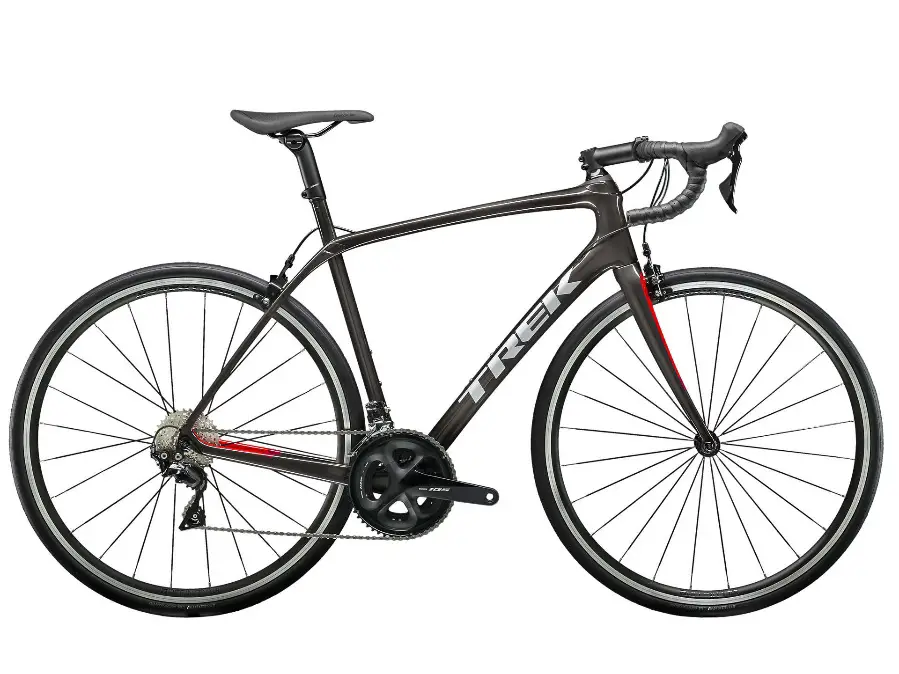
- Easily adjusts to suit all types or riding situation both recreational short distance riding and long distance racing
- Made of lightweight strong and durable carbon fiber material
- Each bike has been taken through rigorous computerized aerodynamics to give you versatility and comfort
- A Trek road bike may be better suited for routine rides as opposed to frequent long distances. This owing to limited endurance levels.
Table of Contents
View price on Amazon
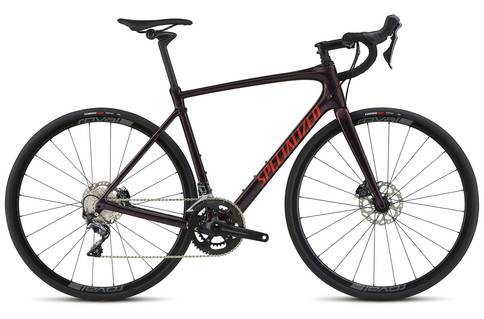
- Maximum comfort and stability
- Lightweight carbon fiber road bike
- Future shock suspension system reduces the impact caused by bumps and potholes for a smoother ride
- To make room for the future shock suspension system, his bike is significantly higher. This may be a turn off for riders who want a road bike with normal height measurements.
Final verdict In regard to fitting, Trek and Specialized road bikes are quite similar. They also have distinct features that separate one from the other. This is what has led me to pick a Trek road bike. This bike is a true exhibit of how technology can make things easier and more exciting for riders like me. To be honest, I want to look like a pro rider but I do not want to face any of the repercussions and difficulties that come with riding long distance. This Trek vs Specialized road bikes review is a true demonstration of how far we’ve progressed and how serious riding is for many.
Cycling made Simple.
Made By Cyclists
Trek Vs Specialized Mountain Bikes
May 4, 2023

Key Takeaways
- Trek bikes tend to be more cost-efficient, with options starting under $400.
- Trek bikes are known to be more durable and great for more challenging trails and terrain.
- On the other hand, Specialized bikes are lighter, fast, and more aggressive.
- The choice between Trek and Specialized bikes comes down to your needs.
- Consider factors like price, durability, range of models, suspension system, and weight.
This article may contain affiliate links where we earn a commission from qualifying purchases.
Can't decide between Trek and Specialized Mountain bikes? Our article helps you make an informed choice. Get the best ride for your adventure!
When it comes to Trek vs. Specialized mountain bikes, there’s no straightforward answer to which is best. Specialized bikes are faster and more aggressive and are known for their cutting-edge technology. Conversely, Trek bikes are more stable and comfortable, with more variety and options.
Both Trek and Specialized bike brands offer a wide range of mountain bikes with different features and price points. But which one is right for you? I have extensively researched and tested both Trek and Specialized mountain bikes to provide you with the most up-to-date and reliable information. So, if you’re looking to make an informed decision about which brand to choose for your next mountain bike purchase, read on to find more.
TABLE OF CONTENTS
Trek Vs. Specialized Mountain Bikes Overview
If you are in the market for a new mountain bike, you may have heard of two popular brands: Specialized and Trek bikes. Both are among the best mountain bike brands on the market.
They also offer a wide range of bikes, from entry-level bikes to high-end model options. Both brands offer a wide range of mountain bikes, including hardtail bikes, hybrids, full-suspension bikes, and more.
Trek has a wider variety of bikes to choose from compared to Specialized. On the other hand, you get slightly better parts for entry-level bikes when you go with Specialized road bikes.
That said, both brands offer competing high-end road bikes with slim contrast in geometry. Here’s an overview of the differences between Trek and Specialized mountain bikes:
Trek Mountain Bikes
If you're considering purchasing a Trek mountain bike for mountain biking, you'll be happy to know that they offer a wide range of bikes to choose from.
When it comes to versatility, Trek Bike is the best mountain bike brand. It offers road bikes for every level of rider, from beginners to advanced riders. The brand also has hardtail bikes, full-suspension bikes, as well as electric mountain bikes.
Range of Trek Bikes
This road bike offers a variety of mountain bike models, including:
- Marlin: Entry-level hardtail mountain bike
- X-Caliber: Hardtail mountain bike with a lightweight frame
- Roscoe: Trail hardtail mountain bike with wider tires for added stability
- Fuel EX: Full-suspension mountain bikes with a carbon frame
- Remedy: Full-suspension enduro bike for more technical riding
- Powerfly: Electric mountain bike for added assistance on the trails
- High quality and durability
- A lifetime warranty on their frames
- Large selection of bikes to choose from
- Trek road bikes are also designed with the rider in mind, with features like adjustable suspension and dropper posts.
- They can be more expensive than some other brands. However, you do get what you pay for in terms of quality and durability.
- Some riders also find that Trek bikes can be on the heavier side, which can make them more difficult to maneuver on the trails.
Specialized Mountain Bikes
If you are considering buying a mountain bike, Specialized is a mountain bike brand you should definitely check out. Specialized models are known for their more expensive and high-end bikes, but they also offer more affordable entry-level mountain bikes than some of their other models.
Specialized is a well-known brand in the mountain biking world, and for a good reason. They offer a wide range of mountain bikes to suit every rider's needs and preferences.
The Range of Specialized Bikes
Specialized brand is known for manufacturing bikes in a wide range, from entry-level to high-end models.
- Cross-country (XC) mountain bikes : These are lightweight and efficient bikes designed for racing, cross-country riding, or riding on smoother trails.
- Trail bikes : These are versatile trail-riding bikes that are capable of handling a variety of terrains.
- Enduro bikes : These bikes are designed for riders who like to ride fast on rough and technical terrain.
- Downhill (DH) bikes : These are heavy-duty bikes designed with modern car braking systems to handle downhill riding. They’re great for riders who want to ride downhill fast and aggressively.
- Fat bikes : These are specialized mountain bikes with oversized tires that provide extra traction on snow, sand, and other soft terrains.
Specialized mountain bikes come in a range of wheel sizes, including 27.5", 29", and 27.5+. Overall, the range of specialized mountain bikes caters to different riding styles and terrains.
- They offer well-rounded performance characteristics.
- They’re known for their lighter weight and versatility, making them a great option for riders who want a bike that can handle a variety of terrain.
- They also offer a range of women's-specific mountain bikes designed to fit the female anatomy and provide a comfortable, efficient ride.
- While their entry-level models are relatively affordable, their higher-end models mostly comprise expensive bikes.
- Some riders may find that the geometry of Specialized bikes doesn't suit their riding style or body type.
- Specialized bikes may not be as durable as some other brands. However, this can vary depending on the specific model and how it is used.
Trek Vs. Specialized Bikes: Which One to Choose?
Choosing between a Trek and a Specialized mountain bike can be a tough decision. Both brands have their strengths and weaknesses; ultimately, the right choice depends on your preferences and needs.
Let’s compare the two brands in terms of bike technologies, frame design, groupsets, wheels, and tires to help you make an informed decision.
Trek Vs. Specialized Bikes Bike Technologies
When it comes to bike technologies, both Trek and Specialized have unique features that set them apart.
Trek bikes utilize an active breaking pivot rear-suspension design system and a full-floater, while Specialized mountain bikes use Future Shock Rear.
Trek also offers a proprietary suspension system called IsoSpeed, which is designed to absorb vibrations and increase comfort on rough terrain. On the other hand, Specialized offers a proprietary technology called Brain, which automatically adjusts the suspension based on the terrain.
Bike Frame Comparison
Frame design is another important factor to consider when choosing between Trek and Specialized mountain bikes.
Trek mountain and road bikes are known to be versatile. These bikes can handle a wider range of terrain. On the other hand, Specialized bikes are crafted with specific types of riders and terrain in mind.
Trek mountain bikes have relatively hefty frames, which provide a more stable and reliable ride. They use a full-floater and active breaking pivot rear-suspension system.
On the other hand, Specialized is mainly known for its lightweight bikes, yet they occasionally make a compromise-weight model. And because Specialized frames may be slightly lighter, they might not be as durable.
Groupset Comparison
The groupset is the collection of components that control the shifting and braking of the bike. Both Trek and Specialized offer a range of groupsets from various manufacturers, including Shimano and SRAM.
Trek bikes tend to use more expensive groupsets than Specialized bikes, which can make them more expensive overall. However, the higher-end groupsets on Trek bikes tend to offer better performance and durability.
Bike Wheels Comparison
The wheels on a mountain bike can greatly affect its performance and handling. Trek offers a wide range of wheel options, including carbon fiber and aluminum rims.
Conversely, Specialized offers a proprietary wheel technology called Roval. Both brands offer tubeless-ready wheels that can improve traction and reduce the risk of flats.
Bike Tire Comparison
Tire selection is another important consideration when choosing a mountain bike. Trek and Specialized both offer a range of tire options, including tubeless-ready tires that can improve traction and reduce the risk of flats.
Trek bikes tend to come with wider tires, which can provide better stability and traction on rough terrain. Specialized, on the other hand, offers a range of tire technologies, including the Gripton compound, which is designed to provide exceptional grip in wet and dry conditions.
Factors to Consider When Choosing Trek Vs. Specialized Bikes
When deciding between Trek and Specialized mountain bikes, there are several factors to consider. Here are some key points to keep in mind:
- Budget: Trek bikes tend to be a bit more expensive than Specialized bikes. Specialized might be the better choice if you're on a tight budget.
- Riding Style: Consider what type of riding you'll be doing. Trek bikes are designed to handle various terrains, while Specialized mountain bikes are designed to cater to specific types of riders and terrains.
- Components: Both Trek and Specialized use high-quality components, but Trek tends to use higher-end components and materials, such as carbon fiber, in their mountain bikes, which can give them a performance edge.
- Suspension: Trek bikes use a full-floater and active breaking pivot rear-suspension system, whereas Specialized MTB uses Future Shock Rear. Both systems have their advantages and disadvantages, so it's important to test-ride both types of bikes to see which one feels better for you.
- Size: Make sure to choose the right size bike for your body type. Trek offers a wider range of bike models than Specialized, which can make it easier to find the perfect fit.
Ultimately, both brands offer high-quality bikes that are designed to provide a great riding experience. By considering your budget, riding style, components, suspension, and size, you can make an informed decision and choose the bike that's right for you.

Why Road Cyclists Are Switching to Gravel Bikes

Why Fitness Enthusiasts Are Switching to Smart Cycling Trainers

Why Competitive Cyclists Are Switching to Aero Road Bikes

Why Eco-Conscious Riders Are Switching to Bamboo Bikes
About THE AUTHOR

Danny Lawson
Mountain biking is more than just a hobby for me - it's a way of life. I love the challenge and excitement that comes with it, and I'm always pushing myself to go faster and ride harder. Some people might think that mountain biking is dangerous, but I see it as the only way to live.
Trending Now

Why City Dwellers Are Switching to Folding Bikes

Why Budget-Conscious Riders Are Switching to Co-op Bike Brands

Why Mountain Bikers Are Switching to Fat Tire Bikes

Why Urban Commuters Are Switching to Electric Bikes

About PedalChef
PedalChef is a blog on all things cycling. We are a group of people who love bikes, and we want to share the joy that comes with the experience. You can read more about us here .

©2024 PedalChef. All rights reserved.
We can be reached at [email protected]
PedalChef.com is a participant in the Amazon Services LLC Associates Program, an affiliate advertising program designed to provide a means for sites to earn advertising fees by advertising and linking to Amazon. This site also participates in other affiliate programs, and is compensated for referring traffic and business to these companies.
- Skip to primary navigation
- Skip to main content

Cycling Road
Specialized Tarmac SL7 vs Trek Emonda: Which Bike is Better?
Trying to decide whether the Trek Emonda or the Specialized SL7 Tarmac is better for you? Read for a detailed comparison of the geometry, design, and components of these two premium, lightweight carbon fiber bikes so you can find out which one suits your riding style and preference.
Similarities Between the Specialized Tarmac SL7 and the Trek Emonda

Let’s start with what these two racing bikes have in common—after all, they’re designed to fit the same all-around performance-oriented road bike market niche.
The Tarmac SL7 and the Trek Emonda are both manufactured in Taiwan for the American companies Trek and Specialized, so you can expect a similar build quality between the two. They are both manufactured in Giant’s factory, in fact.
Both the Tarmac SL7 and the Trek Emonda are outfitted with disc brakes and have no rim brake options. This is typical of modern road bikes. Since these bikes are at the higher end of the market in terms of price, disc brakes’ increased cost won’t add much to the already high price tag.
Both bike frames are available in two levels of carbon layup. The highest-grade carbon options for both the Tarmac SL7 (Fact 12r carbon) and the Trek Emonda (OCLV 800) are about the same weight—but the Emonda SLR is ever slightly lighter. The lower-grade Tarmac SL7 (Fact 10r carbon) is lighter than Emonda’s lower-grade carbon frame (OCLV 500).
The two bikes’ maximum tire width is also nearly the same, with the Emonda’s official tire rating coming in at 28 mm and the Tarmac’s at 30 mm. Unofficially, both the Emonda’s and the SL7’s wheels can accommodate up to 32 mm tires with at least 2 mm of tire clearances on each side, so the maximum tire widths between the two bikes are virtually the same.
Tarmac SL7 vs Emonda: Frame Geometry

The geometries of the Tarmac SL7 and Emonda are true to a road racing bike design, being longer and lower to the ground on the front end, with a short wheelbase.
The Emonda has a more comfortable geometry than the Tarmac SL7, with a higher stack and lower reach. However, its RSL integrated barstem handlebar has a longer total reach at 100 mm, 25 mm more than the SL7’s Roval Rapide handlebar at 75 mm.
If you compare the two bikes in the same frame and handlebar/stem size, the Emonda’s frame and handlebar together come out a bit longer than the SL7’s—9 mm to be exact.
The Emonda offers one more frame size option than the SL7, offering eight sizes to the SL7’s seven frame size choices. However, the SL7 frame is available in smaller sizes than the Emonda frame, making it a better choice for shorter cyclists.
The distance between the two wheel centers or wheelbase is roughly the same between the two bikes, and so is the trail measurement. This means that the SL7 and the Emonda handle in roughly the same manner—they both feel agile and aggressive.
Bottom Bracket Comparison
While both bikes use press fit bottom brackets in the last generation, this generation’s Specialized Tarmac SL7 and the Trek Emonda both use threaded bottom brackets.
In theory, press-fit bottom brackets are lighter and stiffer than threaded ones. But in practice, threaded bottom brackets have gained favor among cyclists over press-fitted ones because press-fitted bottom brackets often become loose inside the frame’s housing, making a telltale creaking sound.
The two bikes use different standardized threaded bottom brackets: the Emonda has a T47 bottom bracket, while the SL7 has a BSA bottom bracket.
T47 bottom brackets have a larger diameter than BSA, so Emonda’s frame has a larger housing. The T47 threaded housing has its bearings inside the bike frame, while the BSA has external bearings. This means that the T47 bearings are held more stiffly in the carbon frame housing because of its internal bearings.
When buying a new crank or spindle set, make sure that its diameter and length are compatible with the T47 or BSA housing on your SL7 or Emonda bike. Both the T47 and BSA housing are compatible with mainstream spindle and crank measurements.
Tarmac SL7 vs Emonda Complete Bike Components
Here’s a side-by-side comparison of the components each of these bikes will have if you buy a pre-built Emonda or Tarmac SL7.

The Emonda comes with a Bontranger Aeolus RSL integrated barstem, while a Roval Rapide two-piece handlebar set comes with the SL7. The Emonda’s one-piece, integrated barstem has a cleaner, sleeker look, and is lighter than the Roval Rapide handlebar set. On the other hand, a two-piece handlebar and stem set allows for more customization of your handlebar rotation angle setup.
Both the Emonda and the SL7 use proprietary Trek and Specialized seatposts respectively. The Specialized seatpost is D-shaped, while the Trek seat mast cap is round.
The D-shaped seatpost should, in theory, make the SL7 a more comfortable ride. In reality, SL7 is stiffer and harsher than the Emonda.
There’s no real difference between the two bikes here. You can outfit either one with a Shimano groupset or an SRAM groupset. The only main difference here is that you can’t buy the Tarmac SL7 S-Works bike equipped with lower-level groupsets like SRAM Force and Shimano Ultegra. You need to buy a frameset and customize the components by yourself for that.
The Tarmac SL7’s Roval Rapide is only available in one size (51 mm front depth, 60 mm rear depth) compared to the Emonda’s Bontrager Aeolus which is available in four sizes of rim depth (37 mm, 51 mm, 62 mm, and 75 mm).
That said, depending on the bike shop where you buy the Tarmac, they might allow you to swap the Roval Rapide with a much shallower Roval Alpinist (33 mm depth) if you prefer it.
The Specialized Tarmac SL7 comes fitted with Turbo or Turbo Cotton tires, while the Trek Emonda comes with the Bontranger R3 or R4 tire. The Turbo and Turbo Cotton tires have a lower rolling resistance than the Bontranger R3 and R4 respectively. The lower rolling resistance leads to less energy loss as the tire moves along, making you faster. However, the Bontranger R3 and R4 tires are more durable and long-lasting than Turbos which are known to be very fragile.
The Emonda and the SL7 are both racing bikes. True to this purpose, they’re equipped with short, snub-nose saddles that put the rider in an aerodynamic position angled forward towards the ground. The Emonda uses the Bontranger Aeolus saddle and the SL7 uses the Specialized Power saddle. Both saddles are very popular on the market.
Tarmac SL7 vs Emonda Paint Job
The paint job you choose to put on your bike is, of course, a personal choice that doesn’t affect performance.
That said, if you’re dead set on a certain color for your bike or if you value your bike’s looks highly, the Trek Project One program has far more customization options than the Specialized bike brand has on offer. Color personalization from Trek Project One does come at a higher cost.

Personalizing your bike may not have anything to do with performance, but it can be one of the most fun aspects of riding—it feels great to show off a cool, tricked-out bike to your riding buddies.
Another notable difference is the side logo on the highest-grade Tarmac SL7 frame that reads “S-Works” vs the lower-grade Tarmac SL7 which has the normal “Specialized” text. This is a little dirty trick by Specialized to differentiate their highest-grade carbon even though they share the same shape.

The fact is that these bikes have very similar geometry, so their ride feel is quite similar too. If you select the same handlebar and stem dimensions on both bikes, they feel virtually the same to ride.
The Emonda and the Tarmac SL7 are meant to be lightweight, maneuverable, and fast with a reasonably high aerodynamic performance. They make tough climbs easier and offer stability and safety on fast descents.
Since they both use threaded frames to hold the bracket in place, they both lack stiffness in that area. Press-fitted frames like the Cannondale SuperSix EVO and the Giant TCR outcompete the Emonda and SL7 in this aspect. Between the SL7 and the Emonda, the SL7 feels stiffer during pedaling when the same crankset is installed.
Overall, neither the Emonda nor the SL7 shine in terms of the comfort on the front end. However, the SL7 has a beefier stem handlebar setup, making it better for sprinting than the Emonda. In another win for the SL7, the Emonda’s lighter barstem transfers more vibrations from uneven terrain, making it less comfortable on a rough road surface.
The SL7’s D-shaped seatpost is theoretically stiffer during the side-to-side motion that cyclists do during pedaling out of the saddle. The D-shaped design is also meant to increase comfort on rough riding surfaces. In reality, while the SL7 does feel stiffer than the Emonda the Emonda’s back-end is more comfortable.
Which is the Better Bike?
Both the Trek Emonda and the Specialized Tarmac SL7 offer superior performance, responsive handling, and low weight. The bikes are so similar that the choice between them comes down to which one is a better fit for your body.
The frame geometry of the Emonda is better for riders who need a higher and shorter front end (though, you shouldn’t get the Bontrager RSL integrated handlebars), while the Tarmac SL7’s frame is lower down on the front end. The lower front on the SL7 means that many riders will need to add spacers below the stem so they can get a comparable stack height with the Emonda.
The performance difference between the two bikes skews slightly in favor of the SL7. If you’re absolutely set on the most aggressive, stiff, high-performance bike, the SL7 is better suited to your needs. If you’re comfortable with sacrificing a tad of performance for the sake of comfort, the Emonda may be the way to go for you.
The Project One Program from Trek gives the Emonda a clear advantage over the SL7 in customization options. Through Project One, Trek gives riders control of almost every aspect of their bike, offering a wide range of colors and letting them choose almost every component.
The Emonda SLR, a high-grade, lightweight, composite frame, is lighter than Specialized’s high-grade S-Works frame, giving Trek a slight edge in high-end frame choice. If you’re after a low-cost frame, however, Specialized has a lighter low-grade frame. The low-grade Emonda SL frame is heavier than the corresponding low-grade Tarmac SL7 frame.
The overall appearance of both bikes will appeal more or less to different riders’ tastes, and the differences between the two are slight enough that personal taste is a fine basis to make your choice. Both of these bikes are excellent for road cyclists and are great examples of modern bike design. Whichever choice you make, you won’t end up dissatisfied.
Reader Interactions
Leave a reply cancel reply.
Your email address will not be published. Required fields are marked *
Save my name, email, and website in this browser for the next time I comment.
This site uses Akismet to reduce spam. Learn how your comment data is processed .

Giant Vs. Specialized Vs. Trek: Full Comparison
By Author Anna
Posted on Last updated: March 31, 2023
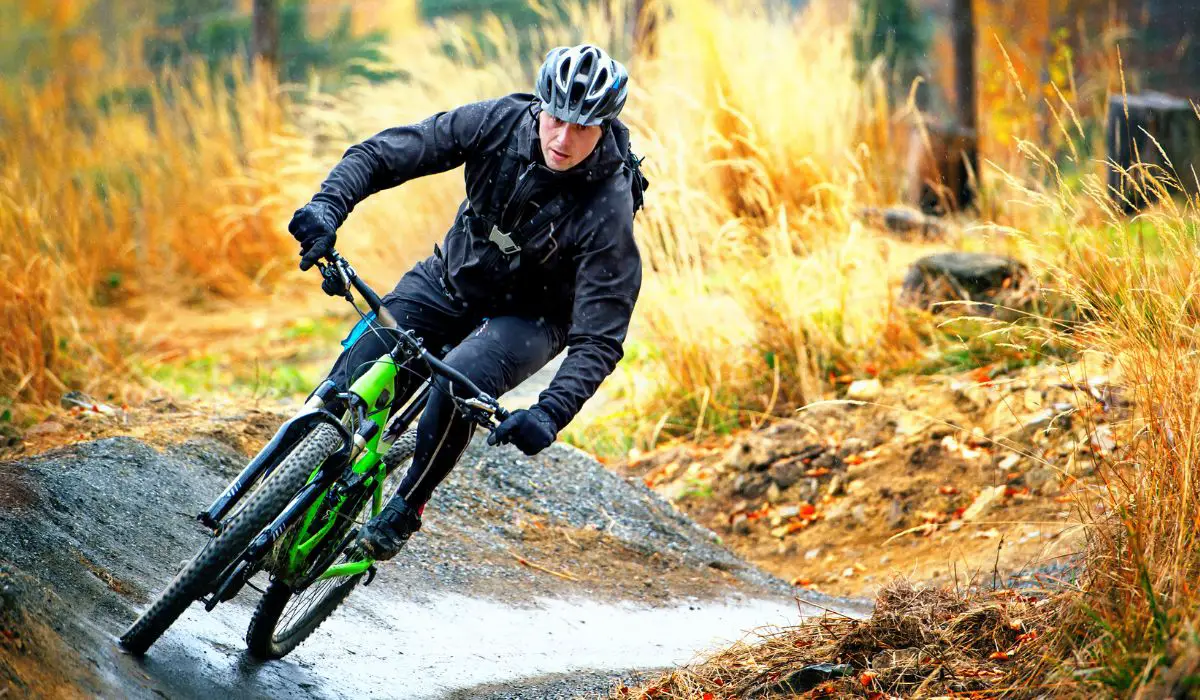
Giant, Specialized, and Trek are huge bicycle brands that are usually your first recommendations in talking with bike mechanics at your local bike shops or from basic Google searches. Although these companies have everything for most people, it’s still helpful to know how they compare.
Giant focuses on options with quality components, even if it’s one or two at every price point. While Trek, and more so Specialized, are more concerned with providing quality performance machines for their mid to high-end clients and often skimp on components on their more affordable builds.
All three of these brands are winners . Each has something to offer, and if you like cycling it’s helpful to note what each leading brand offers .
Giant Vs. Specialized Vs. Trek: History, Reputation, And Resale Value
Like it or not, history can play a vital role in a brand’s reliability . Knowing where a brand came from can help you see where it’s going .
History also spins closely to a company’s reputation . A company that continually strives to produce the best products will have a good reputation that rises above the criticism of being a brand in the public eye.
Giant History, Reputation, And Resale Value
Giant began its global stint by producing bikes for the American Schwinn Bicycle Company . The Taiwanese giant grew more aptly named as it matured to produce bikes and equipment for other recognizable brands such as Scott, Colnago, and even Trek .
After its 1972 birth, the Giant Bicycles brand we now know would come to be in 1981. The cycling market started seeing bikes branded with the Giant brand in the company’s home country . Then it spread to Europe , North America , and other nations .
The company would start foreshadowing its dominance with its involvement in carbon fiber bike production in the late 80s. Giant Bicycles would also start innovating with their Maestro Suspension Technology for offroad riding and all-around performance.
Over the decades, the brand continued ingenuity and bringing high-end performance to budget bikes . The world would grow to consider Giant as the go-to company for riders of all levels , and it’s perhaps this groundwork that would blossom into a reputation of a wide array of bikes at an equally broad price point .
Giant is praised for generally giving cyclist bikes decent components , even if it’s one or two quality components in a relatively benign build.
Although the company doesn’t have the exclusive prestige of specialist bike companies , Giant is a leading cycling corporation that produces long-lasting bikes , and it’s a noteworthy Original Equipment Manufacturer (OEM.)
This company produces mid to high-end bikes that can hold a fair percentage of their original price over the years.
Specialized History, Reputation, And Resale Value
Specialized hasn’t only focused on bike design and product innovation since its start in 1974. Specialized has been proud to promote its humanitarian efforts through programs like Outride to help kids focus on school through cycling .
The Morgan Hill, California company might not measure up in size compared to Giant and Trek. However, its respected brand recognition on the market still makes it a contender not to be overlooked.
The company is innovative , and just a few of its accomplishments undoubtedly prove that.
From the proverbial leftfield, the company satisfied the market with quality tires when there was an obvious need for them. At the behest of everyday riders, Specialized understood the assignment and went on to make some of the first production mountain bikes for offroad cruising .
Specialized would improve and add to the cycling world by also devoting themselves to carbon fiber bikes when the material hadn’t quite infiltrated the general public the way it has today. This may be one of the factors that aided this company to grow to eat at the heels of leading brands, Giant and Trek.
The brand was bought by Meridia Bikes in 2001 and has only expanded its production scope from that point on. Specialized has cultivated a name associated with high-quality builds focusing on light carbon frames and stupendous suspension technology .
Specialized is known for having seemingly exorbitant rates for its bikes, but true to its name, its offerings are specialized and often high-end . This “elitist” status dramatically contributes to their reputation of continually releasing bikes that hold their market value exceptionally well .
Trek History, Reputation, And Resale Value
Trek could probably trademark the spirit of adventure . The company is an accurate representation of family companies that are conceived and nurtured here at home. Trek wasn’t only a dream imagined in Wisconsin; it became the largest cycling company out of the Dairyland State.
Trek’s rise has been as cinematic as its start over a couple of pints and a solid handshake in a bar you’d probably recount your day’s riding. The cycling company would get an early leg-up on its contenders with their long-lived 904 touring bike frames , providing countless miles for avid adventurers and cyclists.
Trek’s devotion to innovation would become easy to follow with its investment in frame designs and emerging cycling technologies . The ever-expanding venture would continue making Hollywood Boulevard strides and go on to create other increasingly recognizable brands such as Bontrager, Electra, and Diamant.
Revolution, comfort, and accessibility are at Trek’s and its subsidiaries’ lead. Trek has invested a lot in its marketing . Combined with their exceptional designs , it has made them one of the most easily recognizable cycling brands .
The company is widely respected and trusted, and its above-average ability to retain its value over the years is one of its best qualities to look out for. Their mid and higher-tier bikes can hold around 50% of their original market value, which is not as typical as you’d think for continually depreciating products.
Giant Vs. Specialized Vs. Trek: Durability, Warranty, And Customer Service
Determining if a bike or product you plan to spend your hard-earned money on will stay with you for the long run is essential. Warranties for these performance machines are also vital to help alleviate the stressors and potential dangers that come with company oversight.

Giant Durability, Warranty, And Customer Service
Giant has proven itself deserving of the number one spot as the most extensive cycling brand in the world. Their bikes have been tested time and again without much faltering. Kids and adults have tested the durability of their bikes, and it has primarily held.
The company is so confident in its builds that they offer a lifetime warranty for its bikes . This warranty covers manufacturer defects on the frame for the original bike purchaser with proof of purchase.
There’s also a limited warranty for faults found on their original equipment and finishes on paint. Giant is humongous and sometimes receives some bad noise for seeming picky with honoring their lifetime warranties .
NOTE: Their online store has been known to dawdle in dealing with some issues. Still, the company primarily deals with problems quickly.
Specialized Durability, Warranty, And Customer Service
Specialized makes bikes that are rated with outstanding durability . The company has amassed respect for its attention to detail and robustness that lasts. The company’s policies are rider-centric, and its lifetime warranty stands as proof of just that. It covers their framesets and branded products .
Their Roval wheels also have a lifetime warranty , and their Specialized-branded products have a two-year warranty that covers faults like paint and visual defects . Their Turbo batteries also have a two-year or 300-charge-cycle warranty .
They also have a two-year warranty from the original date of purchase for subsequent, second-hand owners of Roval or Specialized products. Specialized has similar customer service reception on platforms like :
They are hardly ever based on the quality of their builds. Still, they sometimes receive a beating over their response times and lifetime warranty honoring .
Trek Durability, Warranty, And Customer Service
Trek can’t be much faulted regarding the durability of their frames and overall builds. The company is well-known for being capable of churning out high-quality builds that can last riders for many seasons . Sometimes the line does get slightly blurred between the quality of their handiwork and their knack for excellent marketing .
If nothing else, Trek takes incredible pride in its craftsmanship , as it has been one of its standalone characteristics over the decades. Their lifetime reflects just that.
The warranty applies to their original equipment and aftermarket products . It is non-transferable, meaning that the original buyer needs to be able to prove that it’s been in their care for the entirety of the product’s escapades outside Trek’s factory.
The lifetime warranty benefits their framesets and suspension , as you never know what a couple of hundred miles can unveil.
Trek also has a 2-year warranty on some of their other products, and second-hand owners can get a limited warranty for up to 3 years from the original purchase date of the first-hand owner.
Like all large corporations, Trek has customer satisfaction on either side of the spectrum. Customers do agree that when things go well, they go super smoothly. Still, there are times that hair-pulling can arise from lifetime warranty contests and just general timely replies.
Giant Vs. Specialized Vs. Trek: Accessibility And Servicing
Fortunately, all three of these brands are relatively easy to get your mitts on them. Their extensive inventory also plays well into catering to riders of all levels , and you can get servicing in many shops across the country.

Giant Accessibility And Servicing
Because Giant is a colossal cycling brand, they can ship their bicycles nationwide at a fraction of the cost of other brands like Trek. Even though they don’t have factories here in the States, they can quickly fulfill orders through bike shops nationwide without hindrance.
The brand is also so famous that finding a shop that can service your bike isn’t challenging. Plus, many of Giant’s builds still retain the original simplicity of bikes . You can do your servicing without being thwarted by complicated integrated cable components .
Specialized Accessibility And Servicing
Specialized can hold its head high as one of the largest bike companies in the world and doesn’t trail far behind Giant and Trek. The company’s size is one reason why Specialized bikes are available in many bike outlets worldwide and across the country.
Cyclists shouldn’t encounter much hassle getting their hands on a Specialized bike and servicing it. However, because their lineup has bikes with some advanced engineering , it is challenging to do self-servicing .
Good bike shops with experienced mechanics should have no issues servicing your Specialized bikes. Still, it might get expensive the higher you go up the Specialized hierarchy.
Trek Accessibility And Servicing
Trek does most of its production in-country, and you can walk into many bike shops and ride off with a Trek bike. Being the second largest cycling brand also affords them a far-reaching understanding of their products.
If stock isn’t an issue, you shouldn’t have any trouble getting your hands on one of Trek’s bikes and services. The builds are also straightforward enough that home tinkerers can do servicing themselves .
Giant Vs. Specialized Vs. Trek: Design, Components, And Technologies
These three leading companies can’t be much faulted for their:
- choice of components
- integrated technologies
Trek’s track record is that of a company that focuses on precision and perfected only technologies that have proven revolutionary in the game.
Specialized also seemingly focuses less on trying out every idea in the hopes of lowering the charge to the customers but works to improve what they are already assets to them.
On the other hand, Giant is so big that it can afford to play around with multiple ideas and works to create something for everyone . Giant’s list of tech and designs on their info page could fill a sizeable pamphlet.
Giant Design, Components, And Technologies
Giant seems to focus on making a wide range of bikes to make cycling accessible to as diverse a market as possible while focusing on comfort and quality components .
The company’s designs are a bit flashier than Specialized or Trek. That confident philosophy is reflected in their many technological ventures .
Advanced Composite Technology
Giant uses High-Performance Grade raw carbon to make their unique carbon material. Their focus is on pushing it on the stiffness-to-weight ratio . The company uses Modified Monocoque Construction for a seamless single-piece fabrication of the front triangle on some of their frames.
The company also expands on this technology with its:
- Advanced SL
- Forged Composite Technology
These two technologies are for Giant’s high-end bikes and offer benefits in terms of:

Aluxx Aluminum Technology
Giant reanimates 6061 aluminum alloy from its impending retirement. Using single-butted aluminum tubing, Giant can produce relatively lightweight framesets that are stronger than they ought to be.
Giant again expands this line of material to use on their more esteemed bikes under:
- Aluxx SLR Aluminum Technology
These are performance-grade upgrades to the humble, tried-and-true aluminum material . Giant does it so well that it looks pristine and performs as such .
Comax Composite Technology
Giant’s propriety mix of quality fiber-reinforced polymer and pure carbon makes for a versatile carbon fiber composite. Their engineering of this material allows for the best rider comfort with as little weight as possible while not compromising performance efficiency.
Maestro Suspension Technology
This simulated single floating suspension creates a suspension system on offroad bikes that is one of Giant’s most:
- independent
- fully active
- pedal-efficient
Crest 34 Suspension Fork
Giant effortlessly flaunts decades’ worth of research and work for response and control that is:
- comfortable
Giant touts this suspension fork as one that asserts its unmatched control and stiffness effortlessly against other suspension forks at similar price points.
Specialized Design, Components, And Technologies
Specialized is known for its simple but technologically loaded designs . Everything from their material to the internals of their frames is optimized and dialed in . The cycling company is constantly working to make their bikes:
- appear more straightforward
Brain Technology
The Brain technology that Specialized uses on some prominent bikes adds intelligence to shock absorption . This suspension technology provided by Specialized responds faster to terrain demands and responds intelligently not to seep out the gas under your wheels.
Over two decades of tweaking and working on this tech helped Specialized fine-tune it to think independently from the rider and adjust from the firm to act in response for optimal control and efficiency .
FACT Carbon Fiber
The Specialized Functional Advanced Composite Technology (FACT) carbon process doesn’t only start and end with the carbon composite material. Still, it is a holistic procedure of using only the best material with industry-leading manufacturing processes.
The FACT carbon fiber is perhaps one of the technologies that have grown to cement it as a formidable producer of carbon frames .
Öhlins Shock Technology
Öhlins Shocks offer seemingly limitless adjustability , and the brand produces an incredibly smooth-feeling and high-performing suspension system .
Specialized managed to capitalize on Öhlins’ innovation by having an exclusive partnership with them which is a big plus for both brands.
Rider-First Engineered
The Specialized trademarked Rider-First Engineered focuses on a data-driven frame design inspired by the company’s relationship with McLaren. The company’s engineering labs look at all the potential pain points of the rider and work to rectify any lack of reliable data.
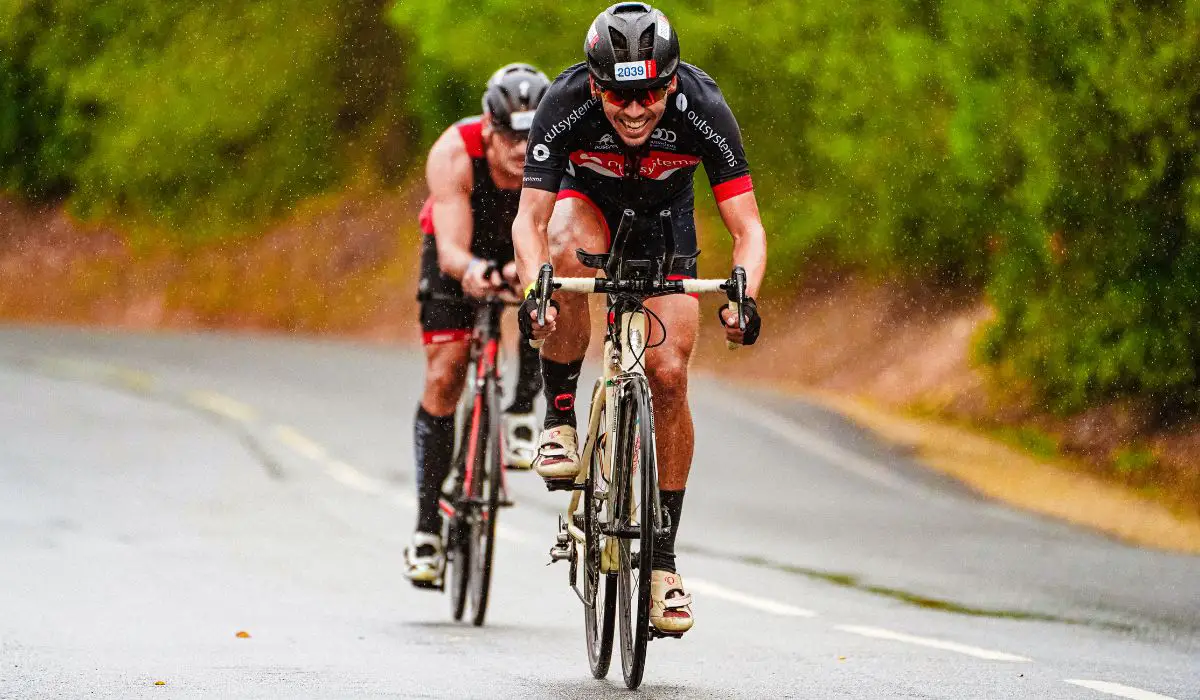
Trek Design, Components, And Technologies
Trek has quality frame designs and takes pride in providing clean and simple lines for its bike silhouette. Their components and mechanics are based on processes they’ve been building on for years.
Alpha Aluminum
Trek says their Alpha Aluminum is their most advanced aluminum concoction . The company has invested innumerable hours into its metallurgical science to produce frames that are robust and light enough to compete against carbon frames.
Trek has squeezed every ounce of performance out of their aluminum for a decreased weight and maximum stiffness on only the places that call for it.
Active Braking Pivot
This simple yet masterful execution of Trek’s suspension system allows riders to brake efficiently without locking out the rear suspension on the mountain bike equipped with this design.
With a simple realignment of the rear suspension pivot , riders can go ham on braking without losing momentum on dicey trails.
RE: Aktiv With Thru Shaft
This setup allows riders to forget that momentary lag of engagement on the shock system , whatever the terrain. Trek is constantly working and reworking its suspension systems to only be there from their input into the ride .
Re: Aktiv has such close tracking of the trail that it almost feels like it’s reading the future .
Trek’s IsoSpeed allows the company’s engineering department to retain the classic diamond-shaped frameset where it should be while adding a beautiful level of:
- predictable stiffness
- frame compliance
Giant Vs. Specialized Vs. Trek: Bike Range And Prices
Giant has one of the largest , if not the largest, spread of bike types at every price . Companies like Giant put mass-produced, discount store bikes in the area they belong in.
Specialized and Trek are more bourgeois brands . Although they offer entry-level bikes, they often all seem like afterthought capitalization compared to their mid-tier and higher-end offerings .
Giant Range And Prices
Giant has pretty much every type of modern bike you can think of. Without much effort, you can find a bike that can be a good companion for several thousand miles specially designed for:
Their electric bike range has been building up steam over the years, continually decreasing prices while improving . The company has road bikes ranging from as low as around $500 to around $12,500 .
Specialized Range And Prices
Specialized also carries a wide array of bikes at all price points . The company provides everything seasoned cyclists and newbies could ever want. Their pure-bred road bikes start at around $1,000 and can dance around the $15,000 mark .
Fortunately, the company knew to not only focus on mid-tier and up ranges . They also offer other hybrid and mountain bikes for around $600 , even though some of these bikes seem to constantly remind you that they are entry-level with the use of questionable components for the price point and the age.
Trek Range And Prices
Trek has a respected lineup of touring and mountain bikes with stellar suspension . Their focus is commendable on these bikes:
- women-centric
Although there’s always a harmonious chorus of getting what you pay for , Trek does get some flak for not fully catering to people with newly emerging cycling interests. Their cheapest road bikes sit around the $1,000 mark and gallop past $14,000 .
The company does properly dip its toe into the entry market with its hybrid bikes with price tags as low as around $600 . However, these bikes often flounder from their lackluster component assembly .
Giant Vs. Specialized Vs. Trek: Pros And Cons
Each of these three companies has something to offer the discerning customer , and you shouldn’t be in much want with any purchase of the brands. It’s more important to know what you want for:
- your budget
- what you can’t afford to include in that assembly

Giant Pros And Cons
It’s widely agreed upon that Giant produces comfortable rides . The entirety of their range is appealing to even the most starved pockets. The vast store of bike types at all price points makes the company a one-stop shop for beginner and more experienced riders .
The company is also respected for selling dead-set products to be bang on the buck . One of the few issues is their propensity to slap one or two name-brand components on lacking builds instead of making the bike more well-rounded.
However, the lifetime warranty on their frames is always comforting because it gives riders a sense of security in their bikes across the board.
Specialized Pros And Cons
Specialized continually cranks out some interstellar builds loved worldwide , especially regarding their S-Works line . Perhaps their high esteem is even more glaring when the company “phones it in” regarding the assembly of components on their entry-level bikes .
Fortunately, mid-tier Specialized bikes usually have a fantastic assortment of components. Another fault with Specialized is that they don’t always have products that match their high price , especially with their mid-tier bikes .
Specialized also has a body geometry design that’s in tune with their riders and can fit like a glove if you take the time to do a proper fitting.
Trek Pros And Cons
Trek has invested a lot of dollars and hours into advertising its brand and saturating the market for recognizability. Their marketing efforts have duly paid off as Trek is now one of the most recognizable cycling brands anywhere in the world .
Unfortunately, many now feel like they are paying more for brand recognizability than the quality craftsmanship from the Trek they grew up with. The lifetime warranty of Trek bikes serves as a small testament to their unwavering dedication to reliable builds and innovative designs .
The company isn’t as affordable as Giant, but it is an American-made brand that stands proud of the fact.
To reiterate, Giant, Trek, and Specialized are leading bike brands for a reason . They are such close matches that an affordable purchase from any of the brands shouldn’t be a disappointment.
For cyclists who have been on the game for some time, it usually comes down to taste and knowing what each company skimps or spurges on .
You might also be interested in:
Giant Vs. Trek Vs. Schwinn
Share me if you found me helpful!

Specialized Sirrus vs Trek Fx Bikes (7 Helpful Differences)

When it comes to choosing a bike, there are many factors to consider. Two of the most popular brands on the market are Specialized Sirrus and Trek Fx. Both offer a wide range of bikes for different purposes, so it can be tough to decide which is right for you.
To help you make your decision, we’ve put together a comparison of Specialized Sirrus bikes and Trek Fx bikes.
Specialized Sirrus vs Trek Fx Bikes
Both brands offer a wide range of bike types, from road bikes to mountain bikes. However, Sirrus specializes in hybrid bikes, while Trek focuses more on performance-oriented bikes. If you’re looking for a bike to use for commuting or leisure riding, Sirrus is a great option.
However, if you’re looking for a bike to take on tougher trails or race, Trek is the better choice.
In terms of pricing, Sirrus bikes are generally more affordable than Trek bikes. However, Trek offers more premium options that come at a higher price tag.
When it comes to features, both brands offer a wide range of options. However, Sirrus bikes tend to be more basic, while Trek offers more advanced features. For example, Sirrus bikes typically have steel frames, while Trek offers aluminum and carbon fiber frames.
Trek also tends to offer more suspension options, making their bikes better suited for off-road riding.
In terms of size, Sirrus bikes are typically smaller than Trek bikes. This makes them a better choice for riders who are on the shorter side.
However, Trek offers a wide range of sizes, so you’re sure to find one that fits you well.
Finally, when it comes to warranty, Sirrus offers a lifetime warranty on their frames and a two-year warranty on their components. Trek offers a similar warranty on their bikes.
It depends on your needs and budget. If you’re looking for a bike to use for commuting or leisure riding, Sirrus is a great option.
However, if you’re looking for a bike to take on tougher trails or race, Trek is the better choice. It comes down to what you need the bike for and how much you’re willing to spend.
Specialized Sirrus Bikes
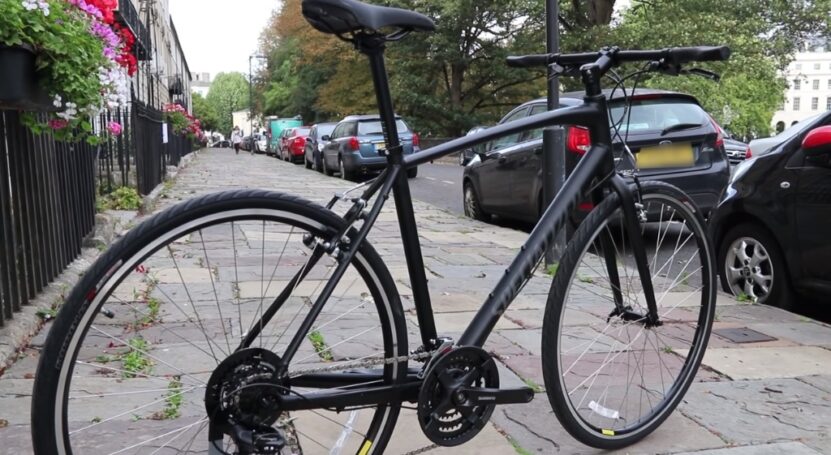
Specialized Sirrus bikes were first introduced in 2003 as part of the company’s line of urban fitness bicycles.
The Sirrus was designed to offer a balance of comfort, performance, and value, and quickly became a popular choice for riders looking for a versatile bike that could handle both city streets and light off-road trails.
In recent years, the Sirrus has undergone several major redesigns, and today’s models are available in a wide range of styles and configurations to suit the needs of any rider.
Whether you’re looking for a simple city cruiser or a versatile all-rounder, there’s a Sirrus bike that’s perfect for you.
Sirrus bikes are built with lightweight aluminum frames and forks that provide a smooth, comfortable ride. The bikes are equipped with durable components that can handle the rigors of everyday riding, and they’re available in a variety of sizes to fit riders of all shapes and sizes.
Sirrus bikes come in both men’s and women’s specific models, and they’re equipped with a wide range of gears to help you tackle any terrain. Whether you’re looking to commute to work or explore your local trails, a Sirrus bike will help you get there in comfort and style.
Trek Fx Bikes
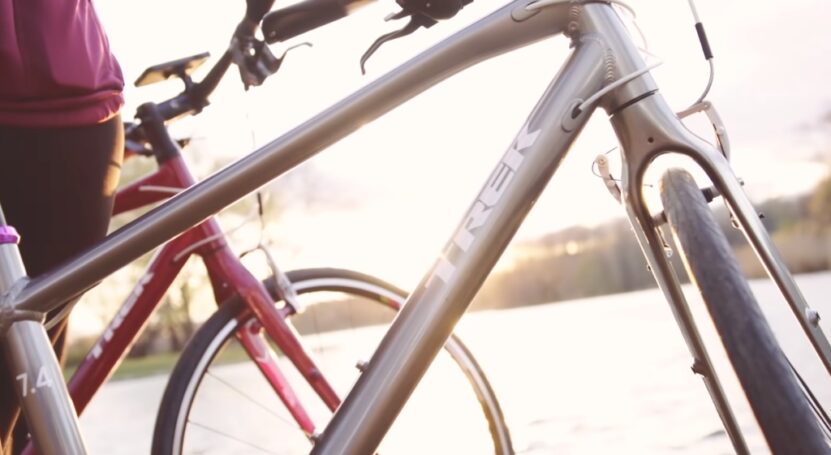
Trek began in 1976 when two young men decided to follow their dreams and start their own business. They started by selling bike parts out of the back of a van at races and rallies, and quickly gained a reputation for quality products and excellent customer service.
Trek has since grown into one of the largest and most successful bicycle manufacturers in the world , with a passion for innovation and a commitment to quality that is unmatched in the industry.
Trek’s FX series bikes are some of the most popular models in the lineup, thanks to their versatility and affordable price point. The FX series offers a wide range of bikes designed for everything from casual riding to commuting to serious training and racing.
Whether you’re looking for a lightweight carbon fiber road bike or a durable aluminum hybrid, Trek has an FX bike that’s perfect for you.
If you’re looking for a versatile and affordable bike that can do it all, the Trek FX series is the perfect choice. With a wide range of models to choose from, there’s an FX bike that’s perfect for any rider.
Whether you’re just getting started in the world of cycling or you’re a seasoned veteran, Trek’s FX series has a bike that’s right for you.
Specialized Sirrus vs Trek Fx Bikes Frame
When it comes to choosing a bike, there are many factors to consider. One important factor is the frame. The frame of a bike can have a big impact on the ride quality, weight, and durability of the bike. Two popular choices for bike frames are the Specialized Sirrus and the Trek Fx.
Here is a comparison of the Specialized Sirrus and Trek Fx frames:
Specialized Sirrus:
- The Specialized Sirrus frame is made from lightweight aluminum. This makes the bike lighter and easier to ride.
- The frame is designed to provide a comfortable, upright riding position. This is ideal for casual riders who want to be able to see and enjoy the scenery.
- The Sirrus frame is also designed for easy pedaling. This makes it a great choice for people who want to get around quickly or ride long distances.
- The Trek Fx frame is made from durable steel. This makes the bike heavier but also more durable.
- The frame is designed to provide a sporty riding position. This is ideal for riders who want to go fast and have a more aggressive riding style.
- The Trek Fx frame is also designed for easy pedaling. This makes it a great choice for people who want to get around quickly or ride long distances.
If you want a lighter, more comfortable bike for casual riding, then the Specialized Sirrus is a great choice. If you want a more durable, sporty bike for a more aggressive riding style, then the Trek Fx is a great choice.
Both bikes are designed for easy pedaling , so they are both great choices for people who want to get around quickly or ride long distances.
Specialized Sirrus vs Trek Fx Bikes Groupset
Bike groupset is a very important factor to consider when purchasing a new bike. There are many different types of groupsets available on the market, and each has its advantages and disadvantages.
Two of the most popular groupsets on the market are the Specialized Sirrus and Trek Fx Bikes. Both of these groupsets have their unique features and benefits, so it is important to compare them before making a decision.
Specialized Sirrus Bikes Groupset:
- The Specialized Sirrus Bikes groupset is designed for use on road bikes. It is one of the lightest groupsets on the market, and it offers great shifting performance. The only downside to this groupset is that it is not compatible with mountain bikes.
Trek Fx Bikes Groupset:
- The Trek Fx Bikes groupset is designed for use on both road and mountain bikes. It is a bit heavier than the Specialized Sirrus, but it offers excellent shifting performance and durability. The only downside to this groupset is that it is not compatible with some older model bikes.
Specialized Sirrus vs Trek Fx Bikes Wheels
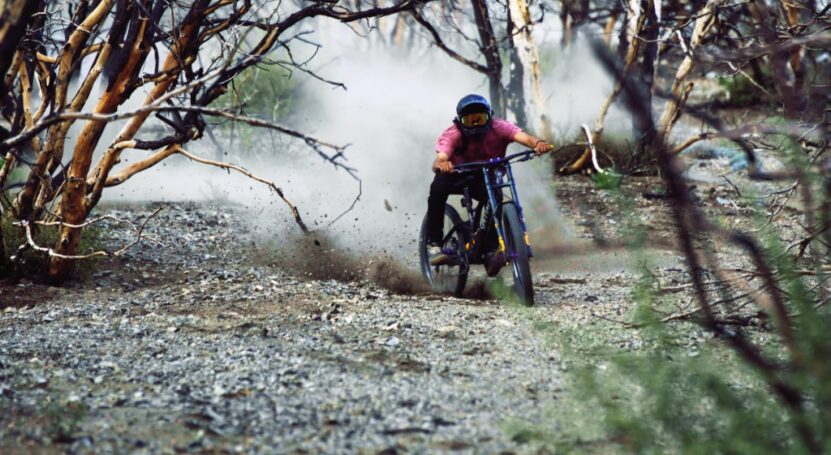
When it comes to choosing a bike, there are many factors to consider. One important choice is between a specialized Sirrus bike and a Trek FX bike. Both offer great options for riders, but they have some key differences in terms of wheels.
The Specialized Sirrus has 700c wheels, which are the standard size for most adult bikes. They are a good choice for riders who want a bike that is versatile and can be used on a variety of terrain. The Trek FX has 26-inch wheels, which are smaller and better suited for road riding.
If you plan to do mostly road cycling, the Trek FX may be a better option.
Both the Specialized Sirrus and the Trek FX have strong and durable wheels. However, the Sirrus has slightly wider tires , which may provide more traction and stability on rough terrain. If you plan to do a lot of off-road riding, the Sirrus may be the better.
When it comes to choosing between a Specialized Sirrus and a Trek FX, it is important to consider your riding needs. Both bikes have great features, but they differ in terms of wheels. Consider your terrain and intended use to choose the bike that will be best for you.
Specialized Sirrus vs Trek Fx Bikes Tires
One of the biggest differences between the Specialized Sirrus and Trek FX bikes is the tires.
The Specialized Sirrus comes with specialized tires that are designed for speed and efficiency, while the Trek FX comes with wider, more comfortable tires that are better suited for leisurely rides or commuting.
The Specialized Sirrus tires are faster and more efficient, but they can be more difficult to ride on rough terrain. The Trek FX tires are wider and more comfortable, but they can slow you down on smoother roads.
Ultimately, the choice between these two types of tires depends on your riding style and what kind of bike you want to use.
If you’re looking for a bike that’s fast and efficient, the Specialized Sirrus is a great option. However, if you’re looking for a bike that’s more comfortable and versatile, the Trek FX may be a better choice.
Specialized Sirrus vs Trek Fx Bikes Brakes
The Sirrus and Trek FX bikes both come with specialized brakes that are designed to provide optimal stopping power and control. Sirrus bikes feature V-brakes, while Trek FX bikes come equipped with disc brakes.
Both types of brakes offer advantages and disadvantages, so it’s important to choose the right one for your needs.
V-brakes are typically lighter and easier to adjust than disc brakes. They also offer good stopping power in dry conditions. However, V-brakes can be less effective in wet or muddy conditions, and they may not provide as much stopping power as disc brakes.
Disc brakes are more expensive than V-brakes, but they offer superior stopping power in all conditions. Disc brakes are also easier to maintain than V-brakes, and they offer more consistent performance over time.
If you’re looking for the best possible braking performance, disc brakes are the way to go. However, if you’re on a budget or you don’t need the absolute best performance, V-brakes may be a better option.
Specialized Sirrus vs Trek Fx Bikes Saddle
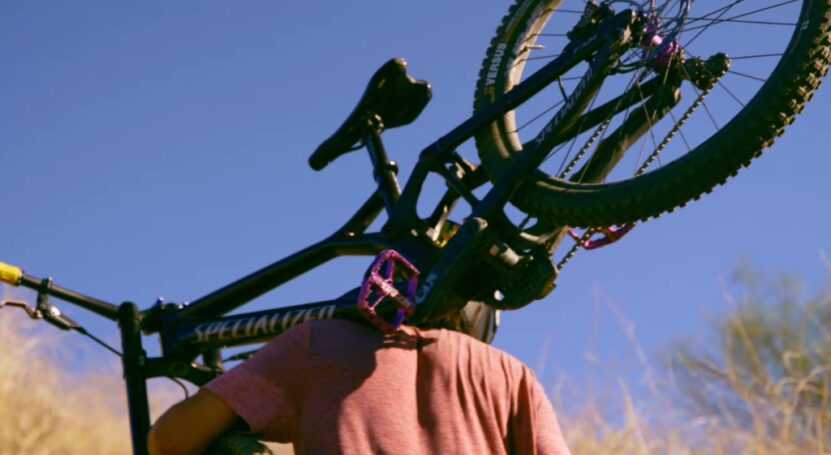
When it comes to comfort, both the Specialized Sirrus and Trek FX bikes offer a comfortable saddle. However, the Specialized Sirrus has a bit more padding, making it slightly more comfortable for longer rides.
For those who are looking for a bike that can handle both road and off-road riding, the Specialized Sirrus is the better option. It has more durable tires and can handle rougher terrain. However, the Trek FX is a great choice for those who want a lighter bike that is easier to carry.
Overall, both bikes offer a comfortable ride, but the Specialized Sirrus is the better choice for those who want a bike that can handle more difficult terrain.
Specialized Sirrus vs Trek Fx Bikes Riding Experience
Riding a bike is a great way to get around. It’s a healthy activity that can help you lose weight , and it’s also environmentally friendly. But what kind of bike should you buy?
There are many different types of bikes on the market, and each has its advantages and disadvantages. Two of the most popular types of bikes are the Specialized Sirrus and the Trek FX.
Both of these bikes have their pros and cons, so it’s important to decide what you’re looking for in a bike before making a purchase. Here’s a look at the riding experience of each type of bike:
The Specialized Sirrus is a great choice for someone who wants a bike that is comfortable and easy to ride. The Sirrus has a suspension fork that absorbs bumps in the road, and the frame is made of aluminum, which makes the bike lightweight.
The Sirrus also has wide tires that provide stability, and the bike comes with Shimano components, which are known for being high-quality.
The Trek FX is a great choice for someone who wants a bike that is fast and efficient. The frame of the Trek FX is made of carbon fiber, which makes the bike extremely lightweight.
The Trek FX also has narrow tires that are designed for speed, and the bike comes with Shimano components.
So, which bike is right for you? It depends on what you’re looking for in a bike. If you want a bike that is easy to ride, then the Specialized Sirrus is a great choice.
If you’re looking for a bike that is fast and efficient, then the Trek FX is a better choice. Whichever bike you choose, you’re sure to have a great time riding it. Get out there and enjoy the ride!
Specialized Sirrus vs Trek Fx Bikes How To Choose?
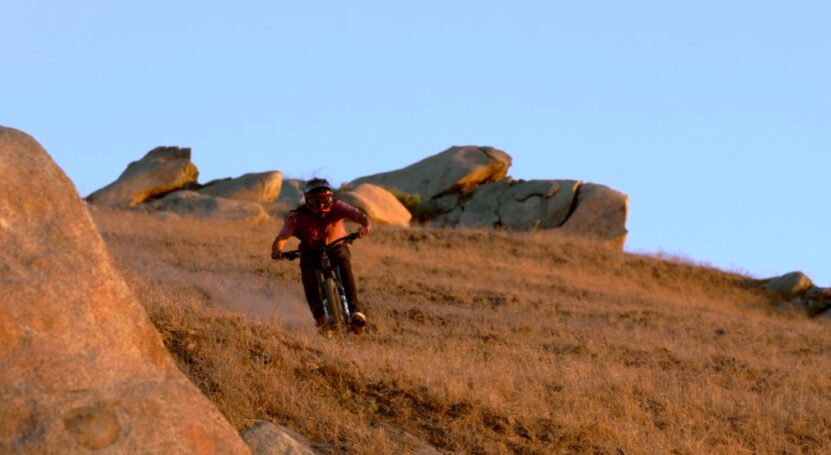
When it comes to choosing a bike, there are a lot of factors to consider. But if you’re stuck between the Specialized Sirrus and the Trek FX, two of the most popular hybrid bikes on the market, how do you choose?
Here’s a quick breakdown of the key differences between these two bikes:
- The Specialized Sirrus has a more road-oriented design, while the Trek FX is more versatile and can be used for both road and off-road riding.
- The Sirrus has a lightweight aluminum frame, while the FX has a steel frame that’s slightly heavier but also more durable.
- The Sirrus comes with front and rear suspensions, while the FX has a front suspension only.
- The Sirrus has disc brakes for better stopping power, while the FX has rim brakes.
If you’re mostly going to be riding on paved roads, the Sirrus is a great choice. But if you want a bike that can handle a bit of everything, the FX is a better option. Whichever bike you choose, you’re sure to enjoy hours of riding fun!
Related Posts:
- Sirrus vs Sirrus X Bike (7 Helpful Differences)
- Trek Dual Sport 4 vs Specialized Sirrus x 4.0 (11…
- In-Depth Comparison: Specialized Roll vs Crossroad…
- Pinarello vs Specialized Bikes (7 Helpful Differences)
- Trek vs Specialized Bikes - 8 Key Differences Explained
- Trek Slash Vs Specialized Enduro (6 Key Differences)
- Help Center
- Chat with a Ride Guide
- 1-866-401-9636
- Retail Store
- Bike Services
Reset Password
We will send you an email to reset your password.
Don't have an account? Create an account
Create Account
Already have an account? Sign In
- Favorite your products & save them to your account
- Save a search & get notified when new products drop
- Be first to know about the latest events & promotions
Bike Finder
Results have arrived, deep dive: specialized diverge vs. trek checkpoint.
The Specialized Diverge and Trek Checkpoint are top dogs in the gravel bike world, but they take different approaches to taming gravel. We compare their tech and features, so you can decide which is best.
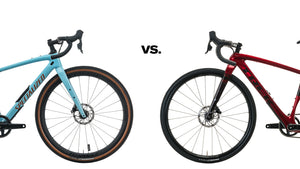
Written by: Bruce Lin
Published on: May 20, 2022
Posted in: Gravel
When it comes to shredding gravel, there are two bikes that rule the roost: the Specialized Diverge and the Trek Checkpoint. Not only are they both high-tech, highly capable gravel machines, but they are also two of the best-selling bikes in the business.
If you’re interested in a Diverge or Checkpoint, how do you choose between the two? Unfortunately, we can't definitively answer which bike is “better” (sorry). Instead, this comparison aims to explore the history of the two bikes, the technology they use, and the features they offer so you can make the right choice.
- Diverge vs. Checkpoint: overview
- Future Shock vs. IsoSpeed
- Tire clearance
- Frame weight
2015-2017 Diverge
2018-2020 diverge, 2021+ diverge, 2018-2021 checkpoint, 2022+ checkpoint.
- Final thoughts
[button] Shop gravel bikes [/button]
Diverge vs. Checkpoint: Overview

The Diverge and Checkpoint take two different approaches to improving comfort on gravel roads. Specialized partnered with Formula 1 innovators, McLaren Applied Technologies, to design Future Shock, which uses a spring in the head tube that suspends the rider with 20mm of vertical travel. Specialized chose to use a coil spring system because it can actively absorb the frequencies commonly encountered on road and gravel without adding excessive weight. Springs are also less complex and have less stiction than traditional suspension systems (e.g., an air fork on a mountain bike) and require less force to initiate their travel.
Specialized claims that because Future Shock is positioned under the stem, it doesn’t affect handling or efficiency. The wheelbase doesn’t change through the suspension's travel and there’s no power loss due to a suspension fork compressing. Future shock only suspends the front of the bike. At the rear, the Diverge relies on high-volume tires and seatpost flex for comfort. The top tube slopes down and the seatpost is clamped low to provide ample room for the post to flex when hitting bumps.

Unlike Future Shock, Trek’s IsoSpeed Decoupler system is a passive system with no moving parts. It provides extra comfort without the weight or complexity of suspension. The top tube is split at the seat tube junction and the seat tube passes through it. The tubes don’t directly touch but are joined by a horizontal shaft and two sealed cartridge bearings. The seat tube can flex fore and aft a few degrees, and between the tubes are two additional elastomer inserts. This helps mute vibrations and bumps that travel through the frame to the saddle but maintains lateral stiffness to keep the bike feeling fast and efficient. The IsoSpeed system used on the high-end SLR model will feel a bit firmer thanks to the added damper.
Both versions of IsoSpeed require little to no maintenance and the bearings and other components are replaceable if needed. The Checkpoint doesn’t use IsoSpeed at the front of the bike because Treks claims high volume gravel tires provide enough compliance, so adding front IsoSpeed is not worth the extra weight or cost.
When it comes to choosing between the two, I suggest riders consider where they value comfort more — in the front or rear. Future Shock is great for riders who experience pain or fatigue in their hands during rough or long rides, while IsoSpeed is similarly good for riders who experience sit bone or lower back pain.
Specialized Diverge vs. Trek Checkpoint: Tire clearance

Until the release of the 2021 Diverge, the Checkpoint was the clear winner when it came to tire clearance. Now, I would call it a draw. Even though the latest Diverge can clear 47mm tires, tires in the 40-45mm range are the most common. Also, even though it was never officially endorsed by Trek, the 2018-2021 Checkpoint can likely fit 650b wheels and tires with no issues.
Specialized Diverge vs. Trek Checkpoint: Geometry
By comparing geometry, it’s clear to see that the latest versions of the Diverge and Checkpoint have moved toward longer reach and chainstays. This has been a common trend for both gravel and mountain bikes because longer bikes are more stable, especially on off-road terrain. Lower bottom brackets and slacker head tube angles also add more stability. One thing to take note of is the stack height. In general, the checkpoint has 10-20mm less stack than a comparable Diverge.
If you lack confidence when going fast or cornering on rough or loose gravel, then longer, lower, and slacker geometry might be better for you. If you prefer more agility or do a lot of road miles, you might prefer shorter, higher, and steeper geometry. Check out our guide to bike geometry to learn more.
Specialized Diverge vs. Trek Checkpoint: Frame weight
The frame weights listed above are for 56cm frames without a fork. I’ve only included weights that have been published online and are easy to find, so you might notice that information is missing for earlier Diverge models because Specialized has not provided it. Also, these are the manufacturer's claimed frame weights, so take them with a grain of salt.
Overall bike weight will mostly come down to the components, but for both the Diverge and the Checkpoint, you can expect carbon models to weigh in between 18-22 pounds, which is very respectable for bikes meant to handle a lot of off-road abuse. Comparing current the top-spec S-Works and SLR models, the Checkpoint just barely wins out. The weights are all close enough though that I don’t consider it a deciding factor.
[newsletter]
Diverge vs. Checkpoint: History
If you're curious to learn how these two models have evolved over the years, or want to understand the differences between various generations, read on for a deep dive.
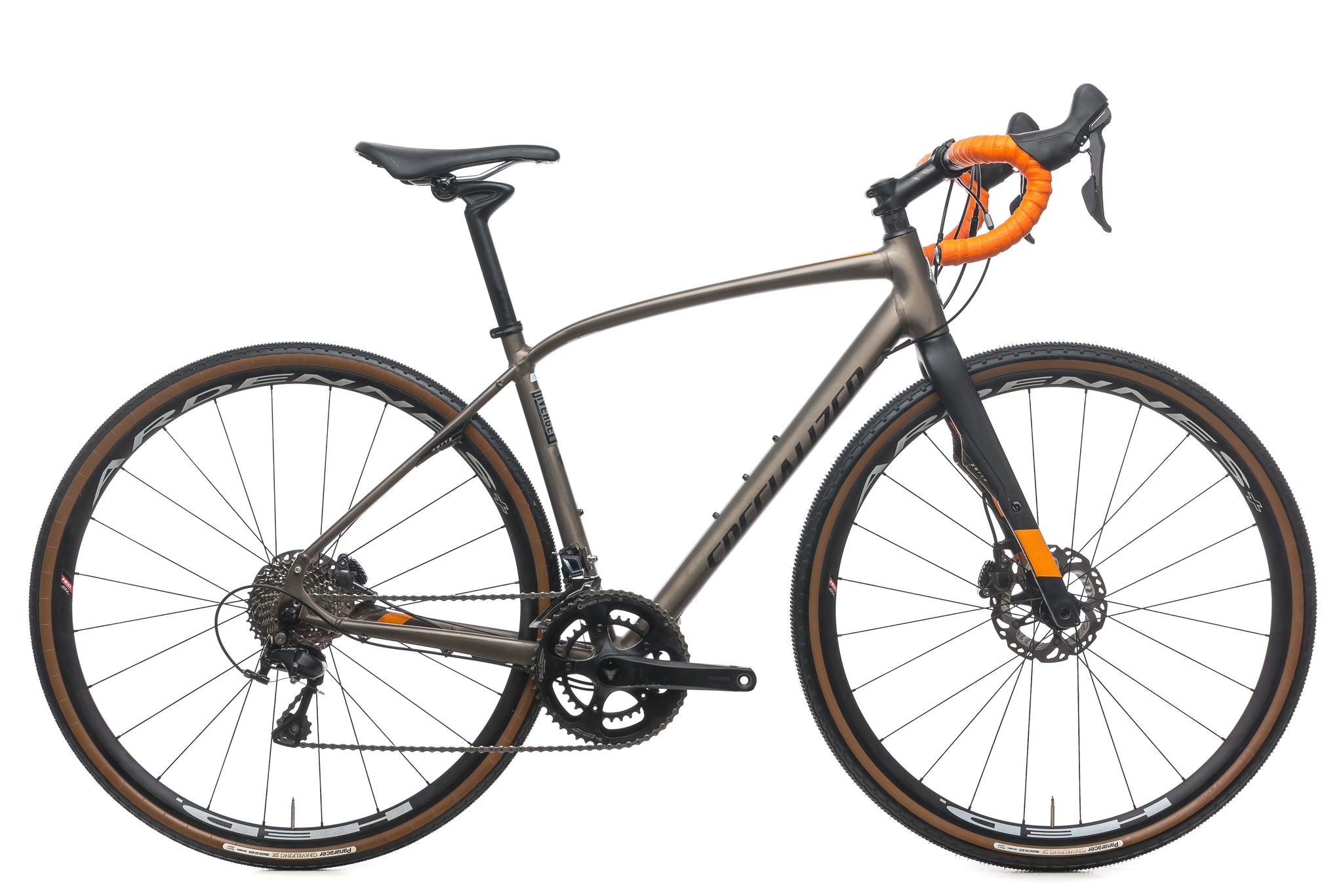
The Diverge geometry matched the Specialized’s Roubaix endurance road bike, with the one difference being more standover height. The frame came in 10r carbon, SmartWeld E5 aluminum, or basic A1 alloy, and had a large focus placed on compliance. The E5 aluminum frame was as compliant as a carbon Roubaix SL4 frame, with the carbon version being another 6% more compliant. Carbon and E5 frames both used vibration-damping Zertz elastomer inserts in the fork and seat stays, while A1 alloy models use Zertz inserts in the fork with curved seatstays to increase compliance.
[product-block handle="specialized-diverge-carbon-gravel-bike-2015-large"/]
The bottom bracket used Specialized’s OSBB standard, which is essentially the same as BB30. Notably, the first generation Diverge uses a 15x100mm front axle and Specialized’s proprietary SCS rear axle spacing with a 12x135mm rear axle. This unique axle spacing can limit future wheel upgrade options.
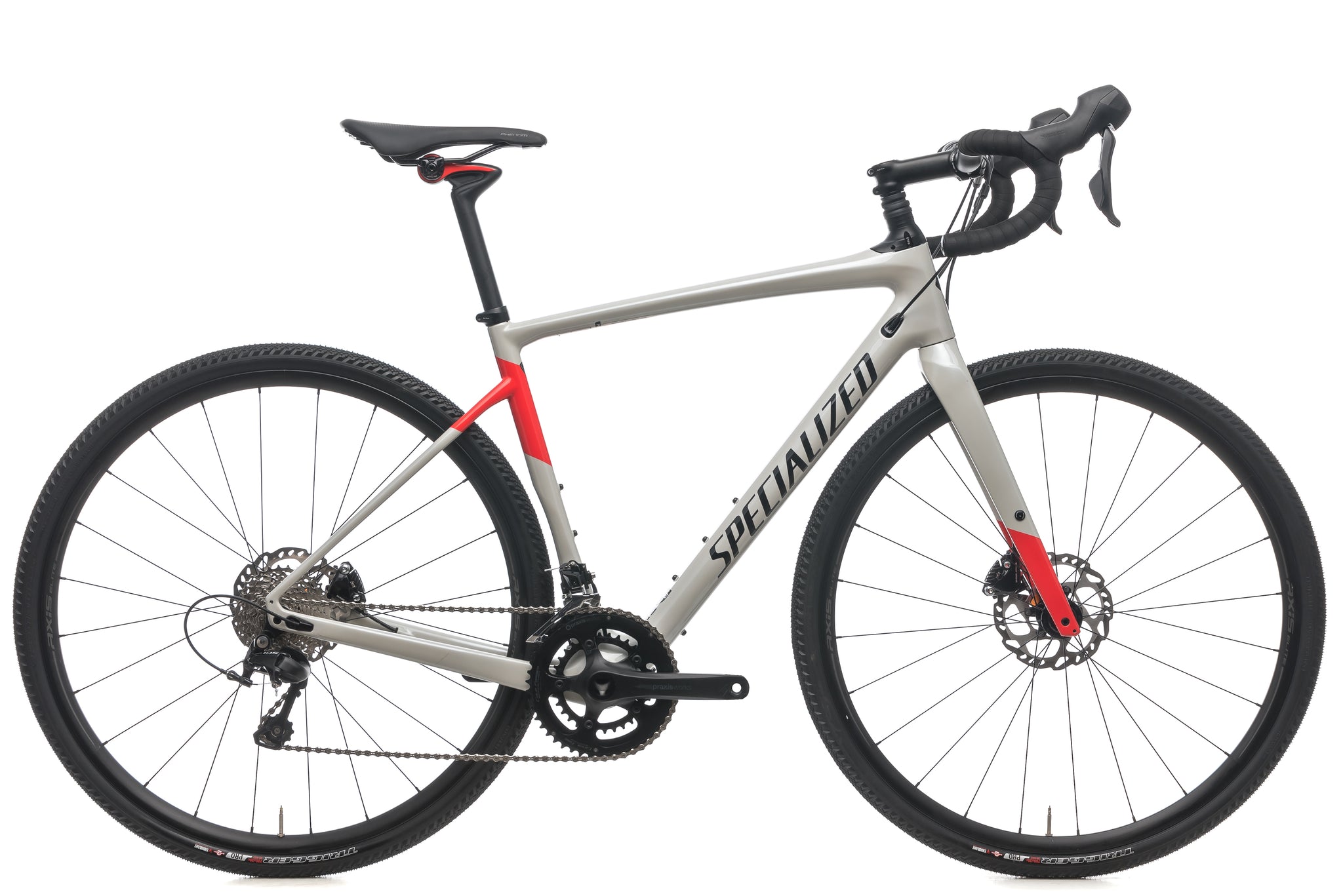
The second-generation Diverge could fit 700c x 42mm or 650b x 47mm tires. The geometry is more stable than its predecessor, with taller stack (mostly due to the addition of Future Shock), lower bottom bracket, longer chain stays, and a slightly slacker head tube.
Then there’s Future Shock, which completely replaced the old Zertz inserts. First introduced on the 2017 Roubaix, Future Shock is a suspension system located under the handlebars that provides 20mm of travel to absorb bumps and increase comfort and control on rough terrain. Springs can be swapped between soft, medium, and hard options to suit different rider weights and preferences.
[product-block handle="2019-specialized-s-works-diverge-l-6"/]
Second-generation Diverge frames came in 9r carbon (which is slightly heavier but also tougher and more compliant than 10r carbon) and E5 aluminum versions. Specialized also added an S-Works model that used high-grade 11r carbon and reduced frame weight to a stunning 880 grams. The axles were updated to standard 12x100mm front and 12x142mm rear thru-axles. The bottom bracket was changed to BB386. Note that the E5 aluminum models are limited to 38mm tires in the rear and the entry-level E5 sport model does not have Future Shock to reduce cost.
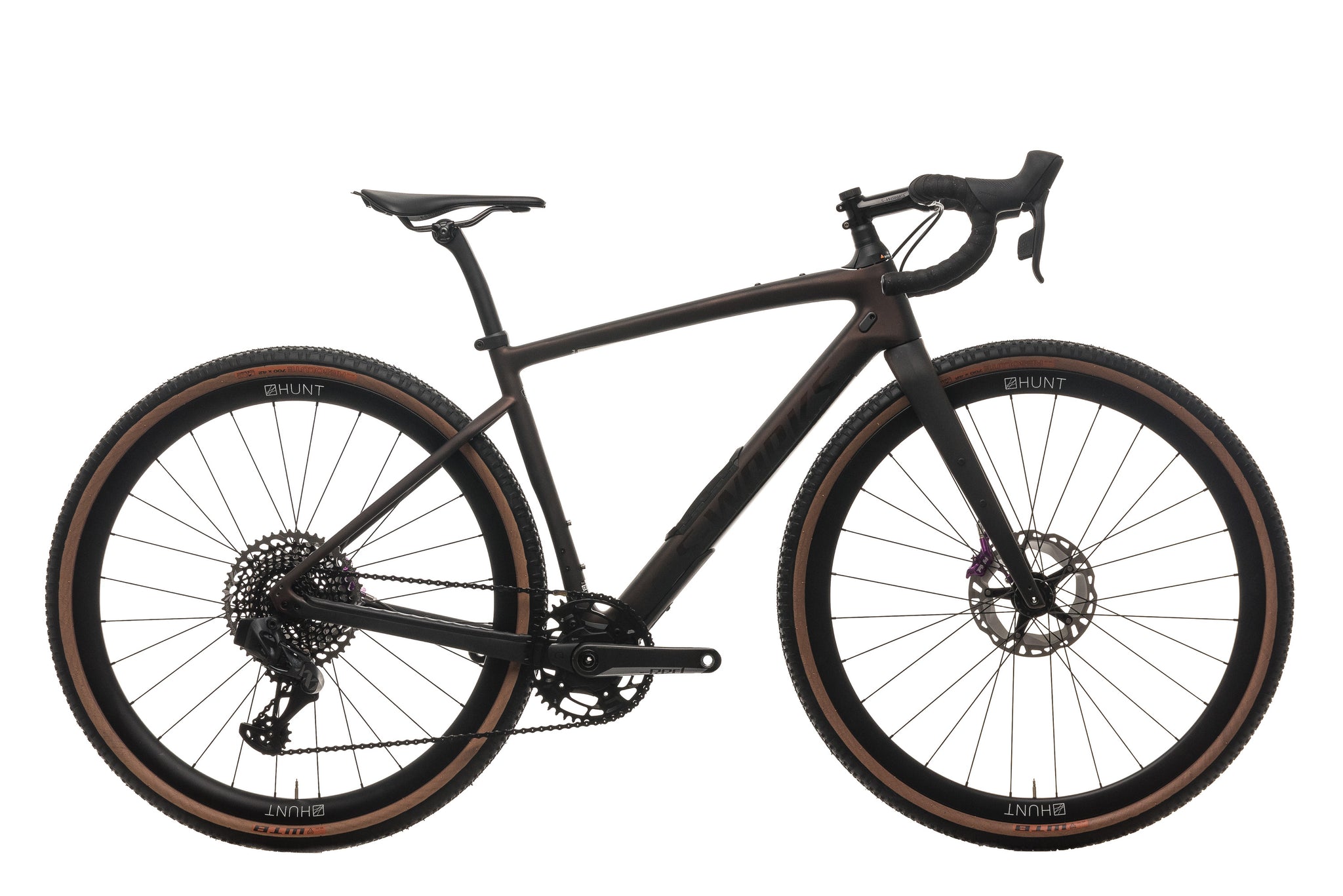
Thanks to a narrower chain stay design, tire clearance has grown to allow for massive 700c x 47mm or 650b x 2.1” tires. The head tube has been slacked out by about a degree across all sizes to increase off-road stability. And an internal S.W.A.T. box storage compartment has been added to the down tube on carbon models.
[product-block handle="2021-specialized-diverge-expert-l-1"/]
Comp Carbon and above models (which use 9r carbon) get the new Future Shock 2.0 system which adds hydraulic damping to keep it more composed in rough terrain and an adjustment knob that allows riders to toggle between firm and soft settings on the fly. Sport Carbon models (which use lower grade 8r carbon) use Future Shock 1.5, which is similar to the original Future Shock used on the previous generation with no damper and swappable springs.
[product-block handle="2022-specialized-diverge-expert-l"/]
E5 aluminum models do not have Future Shock, with the exception of the E5 Evo model which uses Future Shock 1.5. The E5 Evo is a unique option that takes inspiration from mountain bikes with flat handlebars, a dropper seatpost, longer reach, and a slacker 70-degree head tube for all sizes. It also only comes in S, M, and L sizes. It’s a fun option for riders who want to explore singletrack trails and gnarlier gravel roads.
Finally, in a move that’s sure to please home mechanics, all carbon and aluminum Diverge models now have traditional BSA threaded bottom brackets.
[button] Shop the Specialized Diverge [/button]
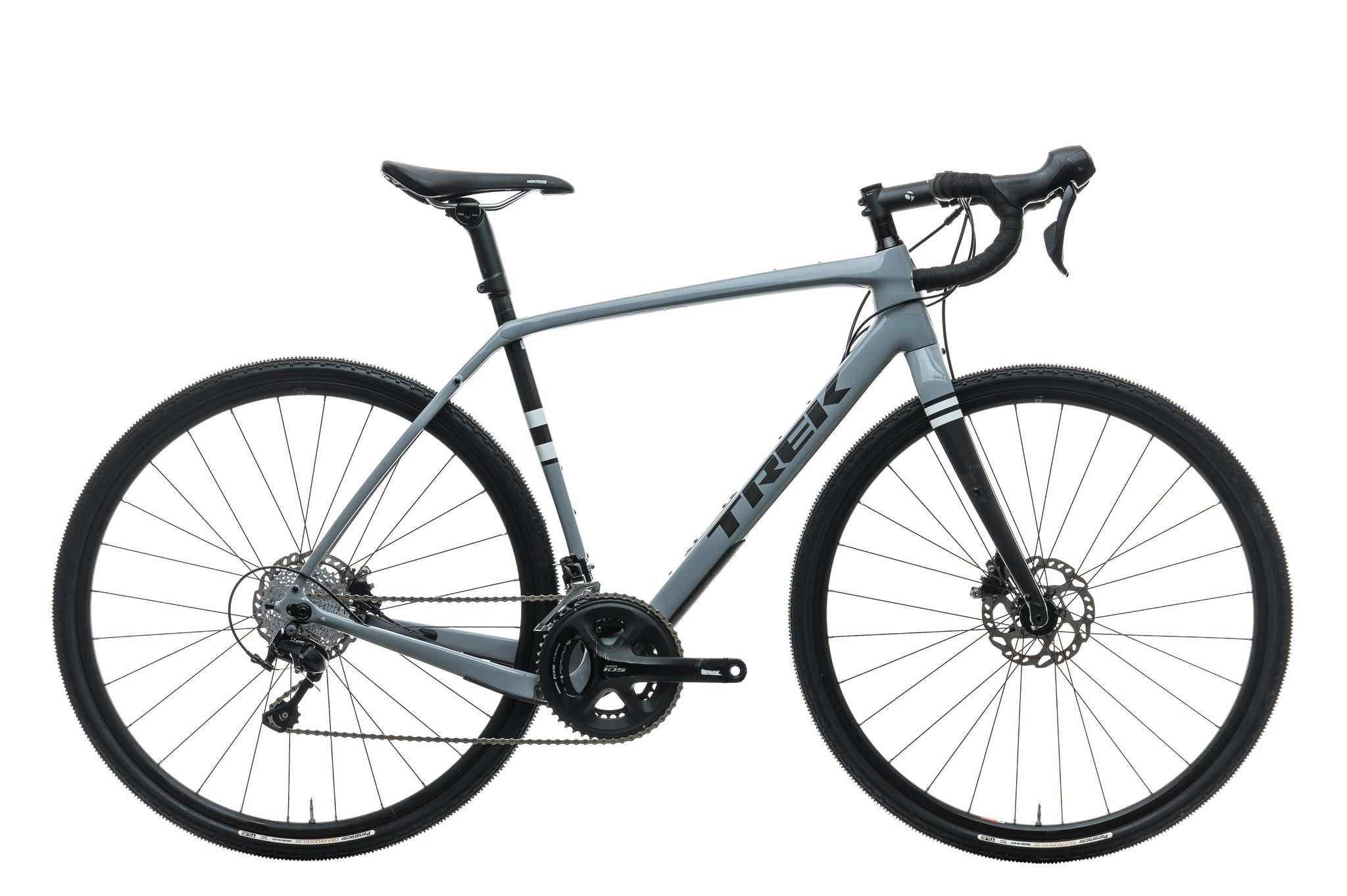
Tire clearance was good from the get-go, with room for wide 700c x 45mm tires. The geometry was carried over from the agile Boone cyclocross bike, with the exception of a lower bottom bracket. Trek claimed this combination of a nimble front end with a lower center of gravity was ideal for riding on fast off-road surfaces. But the Checkpoint also came with Trek’s “Stranglehold” adjustable dropouts. For riders who desired more stability, the rear end could be lengthened up to 15mm to mellow things out. These sliding dropouts also allowed for easy singlespeed setups.
The standout feature though is Trek’s IsoSpeed Decoupler, found on carbon models. IsoSpeed physically decouples the top tube from the seat tube and separates them with elastomers. This allows the seat tube to flex so it can absorb vibrations and bumps, enhancing rider comfort.
[product-block handle="2021-trek-checkpoint-sl7-l"/]
The first generation Checkpoint came in either an SL carbon or ALR aluminum frame. The ALR frame does not have the IsoSpeed Decoupler. SL frames used Trek’s OCLV 500 carbon and a BB90 bottom bracket. ALR frames used a standard PF86 bottom bracket.

The Checkpoint has been so popular that Trek decided to add a new SLR carbon model to the line-up, which sits above the SL carbon and ALR aluminum models. The SLR model has a lighter frame built with higher-grade OCLV 700 carbon, and it uses Trek’s latest Top Tube IsoSpeed Decoupler. Top Tube IsoSpeed features an additional elastomer damper in the seat tube to minimize bouncing. It’s also tuned for specific frame sizes, so small frames intended for lighter riders are more compliant than large frames.
[product-block handle="2022-trek-checkpoint-sl-6-etap-m"/]
SL Carbon checkpoints retain the original IsoSpeed Decoupler design, but they switch from an integrated seat mast to a standard 27.2mm seatpost, which means riders can now run a dropper post if desired. ALR aluminum models still don’t use IsoSpeed but get the same geometry updates as carbon models.
Trek has also added internal down tube storage to the SLR and SL carbon Checkpoint and all Checkpoint models now use threaded T47 bottom brackets.
[button] Shop the Trek Checkpoint [/button]
Specialized Diverge vs. Trek Checkpoint: Final thoughts
If you’ve made it this far, you’ve learned pretty much everything you need to know before purchasing a Specialized Diverge or a Trek Checkpoint. So how do you choose between the two? There are four main factors to consider when comparing them:
- Tire Clearance
- Personal taste
The biggest deciding factor is Future Shock vs. IsoSpeed. Every rider’s body is different, and it’s up to you to decide whether you value front-end or rear-end comfort more. For example, I struggle with hand pain on long gravel rides but generally have no issues with my saddle area, so I’d prefer the Diverge. Some riders, however, might not like the active nature of the Future Shock and would prefer the simpler, more passive action of IsoSpeed.
If you intend to run wide 45mm tires, then it will be easier with the Checkpoint. With the Diverge, you’ll be limited to 2022+ models, which may be more expensive and harder to find. Also, if you like having a low handlebar position, it is easier to achieve on the Checkpoint because it has significantly less stack height than the Diverge. Because of the Future Shock, second-and third-generation Diverges have fairly tall front ends. This is great for comfort, but racers often like having lower front ends for better aerodynamics.

Ian Boswell's 2021 Unbound Gravel 200 winning Specialized Diverge. Photo: Wil Matthews.
Finally, both bikes will perform extremely well on gravel and mixed terrain, so it might just make sense to pick the bike you think looks better, or the brand you find yourself more loyal to. If you’re a racing fan, it’s worth noting that the Diverge is the current defending champion of Unbound Gravel 200, the world’s premier gravel race.
Recently, I’ve been digging the look of the new Diverge, so that’s what I’m leaning toward buying. What bike would you choose and why? Let me know in the comments!
More Gravel

Bikes, Features, Gravel, Latest Mar 28, 2024
This Crust Bombora Shows Us a Different Side of Cycling
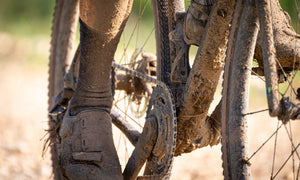
Features, Gravel, Guides, Latest Mar 25, 2024
1x vs. 2x: What Drivetrain Should You Race at Unbound Gravel?
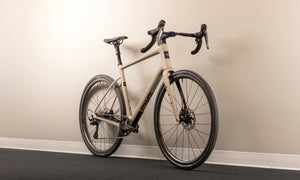
Bikes, Features, Gravel, Latest, Tech Mar 22, 2024
This ENVE MOG x Classified Bike Might Represent the Future of 1x
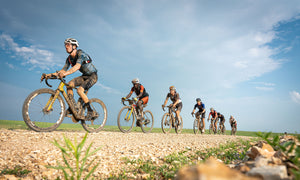
Features, Gravel, Guides, Latest Mar 21, 2024
Choosing The Best Tire Setup for Racing Unbound Gravel

Features, Fun, Gravel, Latest Mar 19, 2024
I'm Going Back to Unbound Gravel This Year (for Vengeance!)
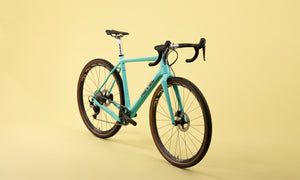
Bikes, Features, Gravel, Latest Feb 7, 2024
I Like This Revel Rover, but I Like the Recyclable Wheels Even More

Features, Gravel, Inside, Latest Feb 5, 2024
Have Fun, Get Dirty, Do Hard Things: 2024 Old Man Winter Recap

Gravel, Latest, Opinion Jan 23, 2024
Are Lotteries the Best Selection Method for Bucket List Events?
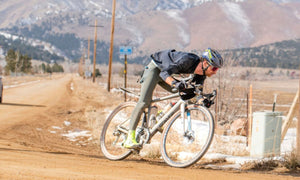
Gravel, Guides, Opinion Jan 13, 2024
Gear for Old Man Winter: The 12 Essentials for Winter Riding Kit

Gravel, Guides, Road Jan 8, 2024
Cervélo Bike Guide: R5 vs. S5 vs. Soloist vs. Caledonia. Which is Right For You?
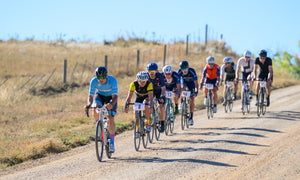
Features, Gravel, Road Oct 9, 2023
Sometimes Road Bikes Can Be Gravel Bikes Too: Left Hand Gravel 2023

Gravel, Guides, Road Sep 29, 2023
The Drop Bar Spectrum: Road & Gravel Bikes Explained
New arrivals.
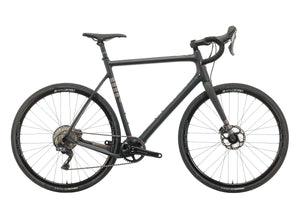
Certified Pre-Owned
Ibis Hakka MX GRX Gravel Bike - 2020, 61cm

Specialized Stumpjumper Expert 29 Mountain Bike - 2018, Large
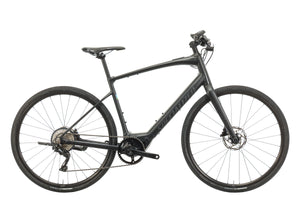
Specialized Turbo Vado SL 4.0 Commuter E-Bike - 2021, Large
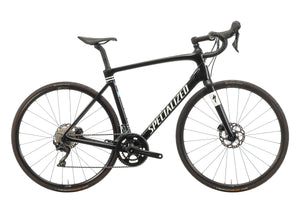
Specialized Roubaix Sport Road Bike - 2021, 58cm
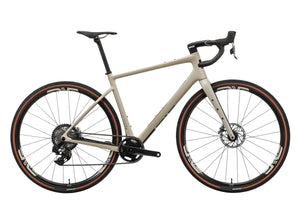
ENVE MOG Gravel Bike - 2023, 56cm
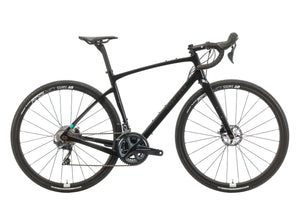
Chapter2 AO Gravel Bike - 2021, Medium
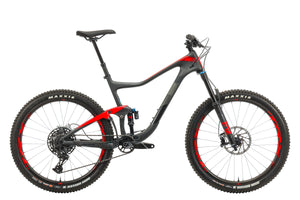
Giant Trance Advanced 2 Mountain Bike - 2019, Large
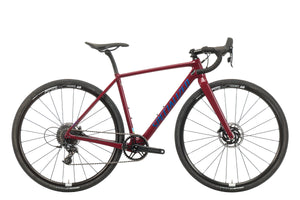
Specialized Crux Cyclocross Bike - 2021, 49cm
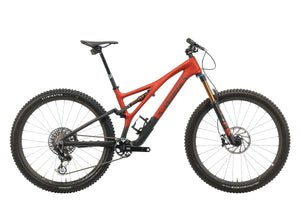
Specialized S-Works Stumpjumper XX AXS Mountain Bike - 2021, S4
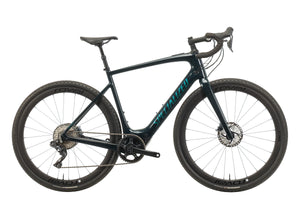
Specialized Turbo Creo SL Expert EVO Gravel E-Bike - 2021, X-Large
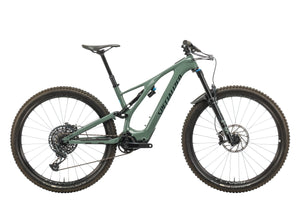
Specialized Turbo Levo SL Expert Carbon Mountain E-Bike - 2022, Medium
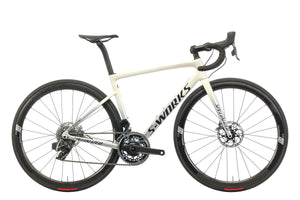
Specialized S-Works Tarmac SL6 Road Bike - 2020, 52cm
- Search forums
- General Ebike Forums
- Help Choosing an Ebike
Specialized, Trek, or Gazelle
- Thread starter FreddieD
- Start date Aug 25, 2021
- Aug 25, 2021
Afternoon All, I'm looking to purchase my first ebike with the main purpose being a short 6 mile roundtrip, commute to work, but would love to use it for the nice (paved) bike trails around Pittsburgh. At the moment, I'm torn between three bikes: 1) Specialized Vado SL 4.0 EQ - $3750 2) Gazelle Ultimate T10+ HMB - $4000 3) Trek Allant+ 7S - $4000 Assuming availability isn't an issue, are there any major drawbacks between the three? From what I can tell they're all fairly similar, all have lights, fenders and racks. I seem to be leaning towards the Trek or Specialized as there are plenty of shops that work on them around me. Appreciate any feedback or insight.
Well-Known Member
FreddieD said: Afternoon All, I'm looking to purchase my first ebike with the main purpose being a short 6 mile roundtrip, commute to work, but would love to use it for the nice (paved) bike trails around Pittsburgh. At the moment, I'm torn between three bikes: 1) Specialized Vado SL 4.0 EQ - $3750 2) Gazelle Ultimate T10+ HMB - $4000 3) Trek Allant+ 7S - $4000 Assuming availability isn't an issue, are there any major drawbacks between the three? From what I can tell they're all fairly similar, all have lights, fenders and racks. I seem to be leaning towards the Trek or Specialized as there are plenty of shops that work on them around me. Appreciate any feedback or insight. Click to expand...
Gazelle C380 (20mph) or C380+ mid step or high step(28mph). Belt drive and enviolo plus 130 years of Dutch bike building and no made in china frames is a big plus for me. With belt drive and nuvinci hub you won’t need a bike shop. All these parts are made by shimano and bosch etc. It’s not like anyone needs any special experience with a certain brand to work on them. To what, replace tires and brake pads? I would not drive a chain and sprocket bike unless I was a bike racer.
Attachments
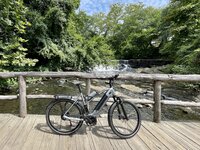
- Aug 26, 2021
Gazelle said: Gazelle C380 (20mph) or C380+ mid step or high step(28mph). Belt drive and enviolo plus 130 years of Dutch bike building and no made in china frames is a big plus for me. With belt drive and nuvinci hub you won’t need a bike shop. All these parts are made by shimano and bosch etc. It’s not like anyone needs any special experience with a certain brand to work on them. To what, replace tires and brake pads? I would not drive a chain and sprocket bike unless I was a bike racer. Click to expand...
Dallant said: I hear good things about Gazelle, but, clearly, not all the parts are made by Shimano or Bosch. Nuvinci hubs never need work? It depends on your need for someone to work on (or WARRANTY) the bike beyond tires and brake pads. Click to expand...
Stefan Mikes
- I take the full power Vado for long, demanding trips (with a spare battery), for instance for road mountain rides (some off-road occasionally)
- I use the SL as my everyday e-bike for local travelling (including some forest rides on fire roads), and to improve my fitness. I can ride longer distances with the Range Extender battery but I would not dare to ride it in the mountainous area. The great point about the SL is you can lift it with one hand, for example upstairs!
Alaskan said: Gazelle, like all other bike makers, do not make their own frames. They say, " Frames are engineered and designed in-house, parts come to the Netherlands and are assembled there ." Riese & Muller also designs and engineers their frames in house but has them manufactured in Taiwan, arguable a part of China or at the very least an adjacent neighbor. If Gazelle really made their own frames in house I am sure they would proudly state that. You may be a capable bike mechanic. I am a capable bike mechanic. Not everyone has the time, skills, interest, tools or inclination to maintain their own bicycle. Most cyclists rely on a good shop to help keep their bike rolling on the road. What else besides chains or derailleurs can go wrong? Internally geared hubs - (not as often but it does happen and when it does special tool are often needed) Head Set bearing Spokes hubs hub bearings brakes hydraulic brake lines wiring motors batteries Frames can crack , welds can fail etc. I own a Trek, a Cannondale and a RIese & Muller. Each make excellent bikes. Each maker has its high points and each one has areas where they have room for improvements. Gazelle is a venerable and respected brand of bike. When you go beyond the facts in your uncritical praise and adulation, your credibility suffers. Click to expand...
Alaskan said: I understand as a Dutchman, you are proud of Gazelle as a company. They paint the frames in house. they do not weld them there. These are two demonstrably false statements you made: "no made in china frames is a big plus for me" "With belt drive and nuvinci hub you won’t need a bike shop" It is a good company that makes nice bikes. There is no need to stretch the truth Click to expand...
Gazelle said: Without a chain and derailleur you eliminate 70 percent of bike shop crap. Click to expand...
Stefan Mikes said: Until you get a flat on the rear wheel. Click to expand...
Gazelle said: Suntour makes fork, its a tapered tube, nuvinci hubs are zero to little maintenance, easy to replacec belt drive last you 20,000 miles, still just a sprocket and belt. Not rocket science. I’m not sure what exotic gazelle part will need work that any shop can’t handle. Tension or replace a cable? I would never pay $4000 for something whose main component, the frame, is Made in China… bosch makes motor and battery. These are all standard off the shelf components shared with many bike companies. What on earth can a new bike need worked on? If you eliminate chains and derailleurs you eliminate about 75 percent of maintenance. Its just a bicycle, the dutch ride their gazelles for 70 years in the rain! Click to expand...
Dallant said: I’m sure you’re proud but just remember the Allant+7 of mine was the 2020 Dutch E-bike of the Year, so there! View attachment 97942 Click to expand...
May I ask you @Gazelle for the actual mileage of your Gazelle e-bike?
To OP: I’d suggest taking each of the bikes you are considering for a test ride. I’d also try to get a feel for the shop while you are at it. Do they seem to know their stuff? Do they inspire confidence they will be able to fix any problems you might encounter? What do the Yelp and Google reviews for the shops look like?
- Aug 27, 2021
Stefan Mikes said: May I ask you @Gazelle for the actual mileage of your Gazelle e-bike? Click to expand...
I meant total mileage. My Vado 5.0/6.0 has now been ridden for over 10,000 km. No issues, only some regular drivetrain and brakes maintenance. Users such as Alaskan (or I) are seasoned riders, and each of us owns several e-bikes. I was asking about your own experience, as you seem to be uncritically devoted to your Gazelle. (I have standardized on Specialized e-bikes, owned a Giant, and own a hub-drive e-bike, too. @Alaskan owns several Bosch based e-bikes from Riese & Muller, Cannondale, and Trek.).
Stefan Mikes said: I meant total mileage. My Vado 5.0/6.0 has now been ridden for over 10,000 km. No issues, only some regular drivetrain and brakes maintenance. Users such as Alaskan (or I) are seasoned riders, and each of us owns several e-bikes. I was asking about your own experience, as you seem to be uncritically devoted to your Gazelle. (I have standardized on Specialized e-bikes, owned a Giant, and own a hub-drive e-bike, too. @Alaskan owns several Bosch based e-bikes from Riese & Muller, Cannondale, and Trek. I would rather listen to what he's saying). Click to expand...
- Specialized
Test ride, test ride, test ride. Then make your decision. It's like hiking boots. What fits me or feels good isn't necessarily going to be the best fit for you.
Similar threads
- JselRollTide
- Jun 30, 2023
- sherlockbonz
- Sep 18, 2023
- AvalancheRun
- Jun 14, 2023
- Mar 12, 2023
- Oct 22, 2023
- We use cookies to ensure that we give you the best experience on our website. Accept Learn More…

IMAGES
COMMENTS
The local specalized dealer is a giant douche. Rude, focused way more on skiing than cycling, and is really taking advantage of supply chain issue with extreme markups on everything. $150.00 for a single 28c GP5000 clincher tire for example. Bikes are marked up ~20% over MSRP.
But just like in a boxing match, there are some key differences between the two. Trek has a wide range of wheel sizes, while Specialized focuses primarily on the 27.5″ and 29″ options. When it comes to material, both brands offer aluminum and carbon fiber options.
The key difference between SL and SLR bikes is the frame. Using the Domane as an example, the SLR frame has adjustable resistance settings on the Isospeed 'suspension' at the front and rear of the bike. The SL frame doesn't (you'll get the level of resistance you're given). The Trek Domane (7) in all it's SLR glory.
Trek Vs Specialized: Two Of Bike Manufacturing's Biggest Players. Both Specialized and Trek were founded during the "Bike Boom" of the '70s, capitalizing on the gap in the US bike market generated by the more prestigious European cycling brands' inability to keep up with both American and European demand.. Prior to the '70s, bikes in the US were likely imported from European brands ...
The Domane SL5 road bike from Trek is ideal for riders looking for a racing bike that is quick and able to withstand long distances. For Specialized, their range of road bikes includes performance bikes, triathlon bikes, and gravel bikes. A Specialized road bike that justifies this manufacturer's credibility is the Tarmac Disc Comp.
Trek road bikes have a tire clearance of 32mm while Specialized road bikes have a tire clearance of 28mm to 32 mm depending on the tire width. Trek vs Specialized road bikes reviews. Trek road bike review. A high-performance road bike that will face every challenge with such incredible ease.
When it comes to Trek vs. Specialized mountain bikes, there's no straightforward answer to which is best. Specialized bikes are faster and more aggressive and are known for their cutting-edge technology. Conversely, Trek bikes are more stable and comfortable, with more variety and options. Both Trek and Specialized bike brands offer a wide ...
Oct 4, 2019. #1. I'm more than a year and a half into ownership of a Specialized eBike. I learned an hour ago that the frame has cracked and it needs an entire new one under warranty. This is on top of other build quality issues which are well reported on the Specialized pages on this site. The new Allant+ 8 looks fantastic and an almost like ...
A subreddit dedicated to the sport of unsupported long distance cycling known as randonneuring or audax. The original governing body for audax is Audax Club de Paris (ACP), who's organising Paris-Brest-Paris every four years.
The Specialized Tarmac SL7 comes fitted with Turbo or Turbo Cotton tires, while the Trek Emonda comes with the Bontranger R3 or R4 tire. The Turbo and Turbo Cotton tires have a lower rolling resistance than the Bontranger R3 and R4 respectively. The lower rolling resistance leads to less energy loss as the tire moves along, making you faster.
Giant Vs. Specialized Vs. Trek: History, Reputation, And Resale Value. Like it or not, history can play a vital role in a brand's reliability.Knowing where a brand came from can help you see where it's going.. History also spins closely to a company's reputation.A company that continually strives to produce the best products will have a good reputation that rises above the criticism of ...
It has more durable tires and can handle rougher terrain. However, the Trek FX is a great choice for those who want a lighter bike that is easier to carry. Overall, both bikes offer a comfortable ride, but the Specialized Sirrus is the better choice for those who want a bike that can handle more difficult terrain.
So, what's the difference between Specialized's 10r and 12r carbon frames? "We may have two different layups for a given model for a Tarmac or Roubaix, and we'll call those 10r and 12r as a way to separate them," Will notes. "The differences between that 10r and 12r layup is primarily the mixture of fibres that we use."
2018-2020 Diverge. With the second-generation Diverge, Specialized enhanced the frame's off-road capabilities. The most notable improvements were increased tire clearance, revised geometry, and the addition of Future Shock. The second-generation Diverge could fit 700c x 42mm or 650b x 47mm tires.
I'm looking to purchase my first ebike with the main purpose being a short 6 mile roundtrip, commute to work, but would love to use it for the nice (paved) bike trails around Pittsburgh. At the moment, I'm torn between three bikes: 1) Specialized Vado SL 4.0 EQ - $3750. 2) Gazelle Ultimate T10+ HMB - $4000. 3) Trek Allant+ 7S - $4000.